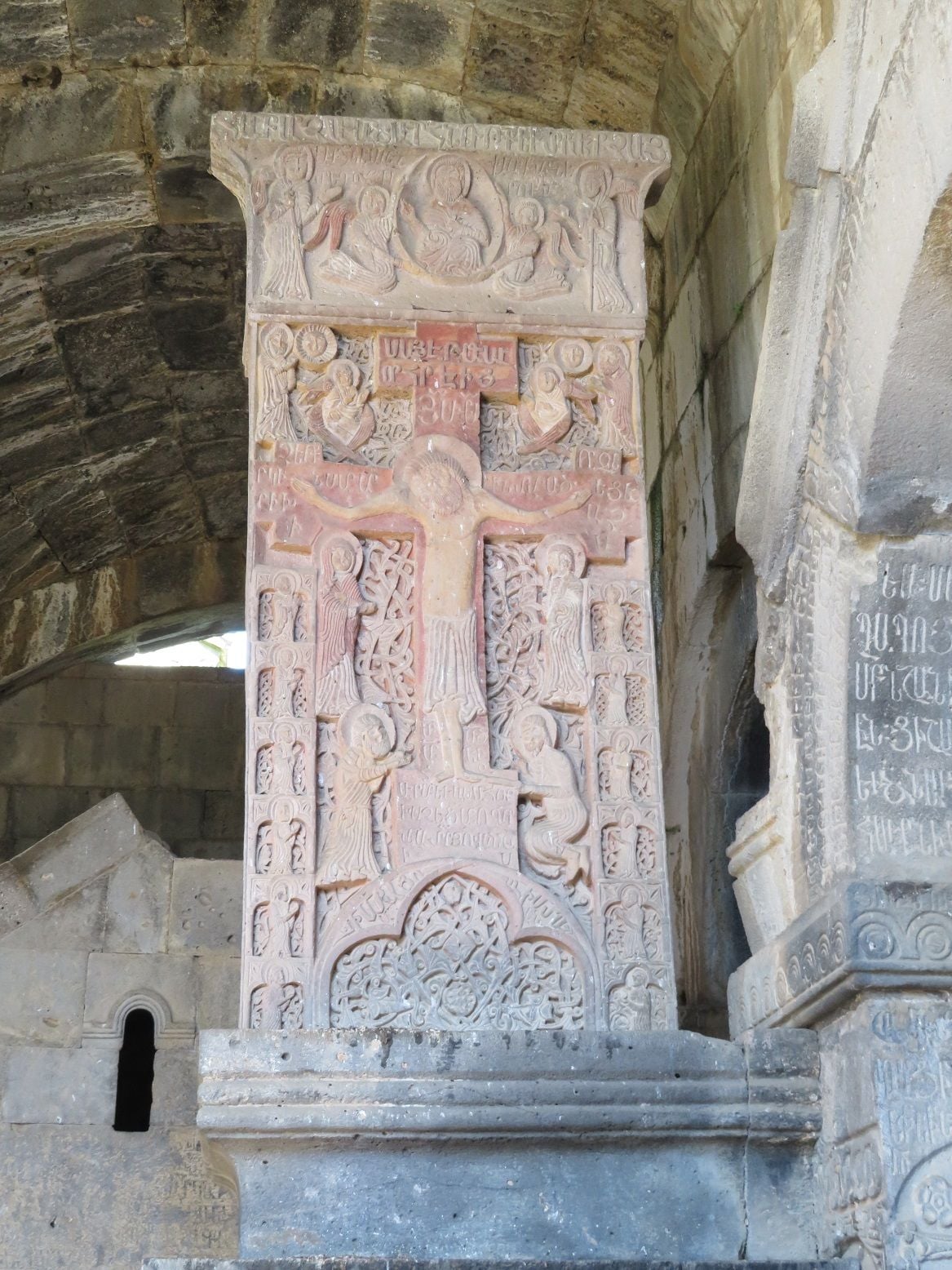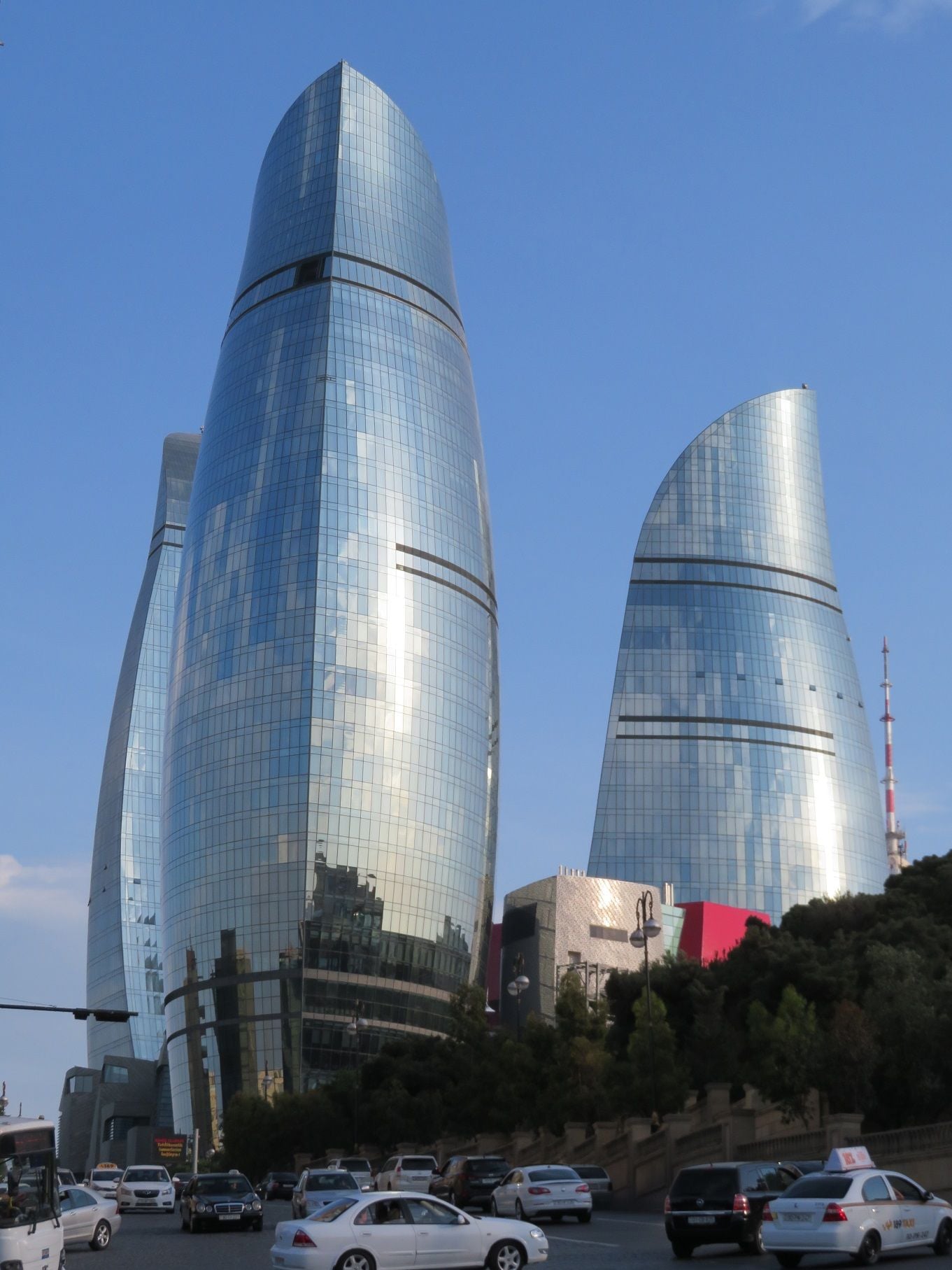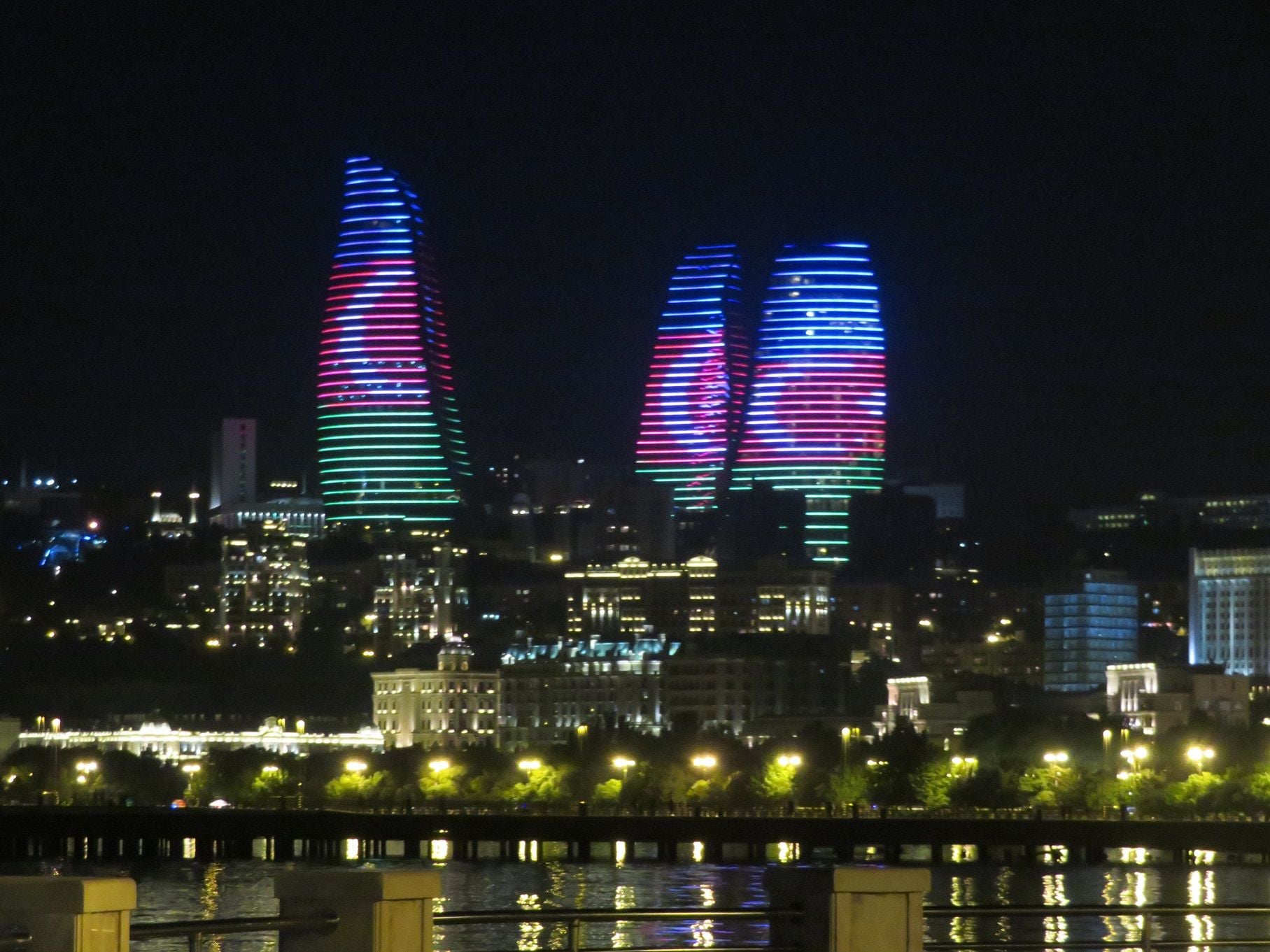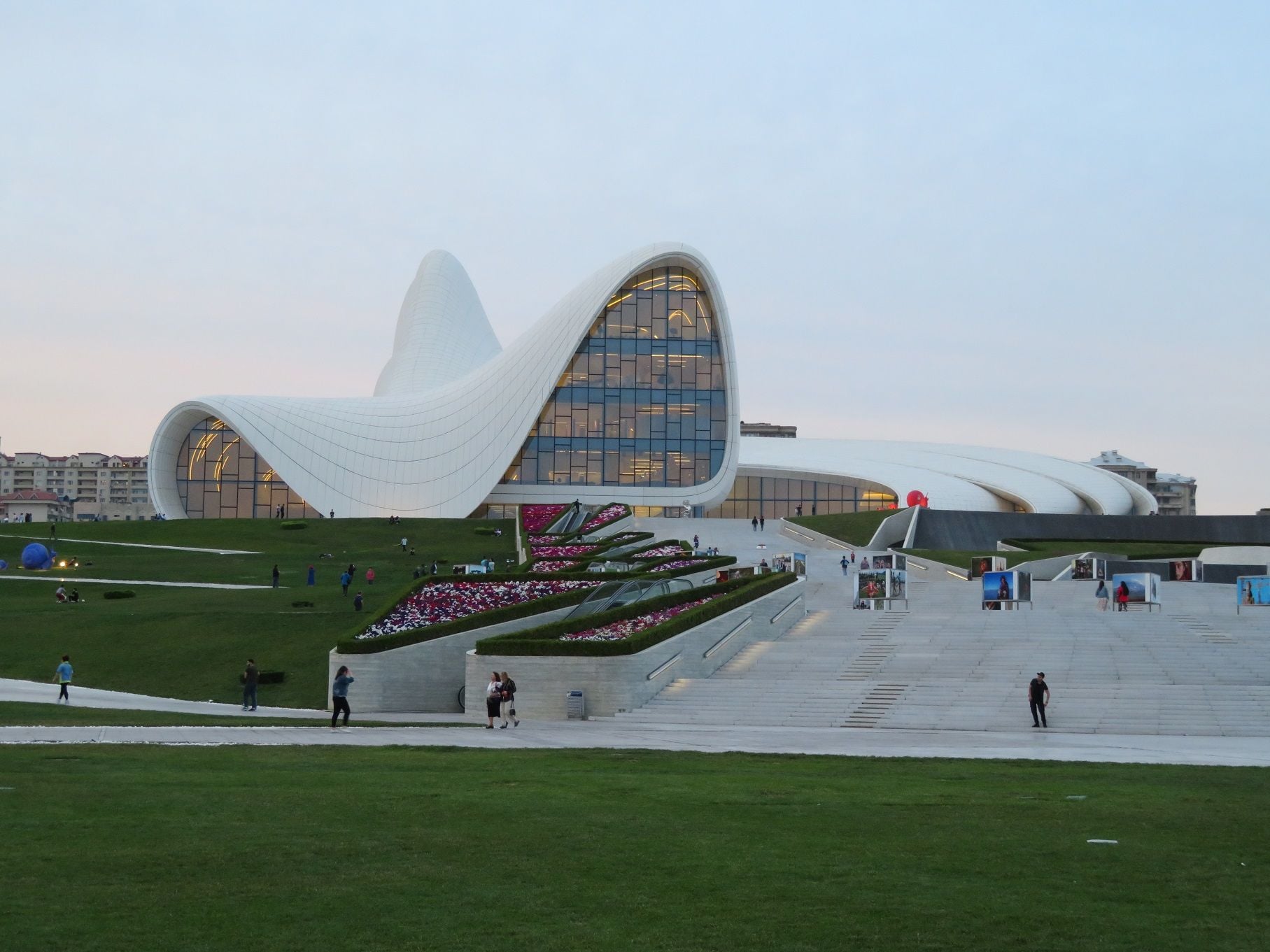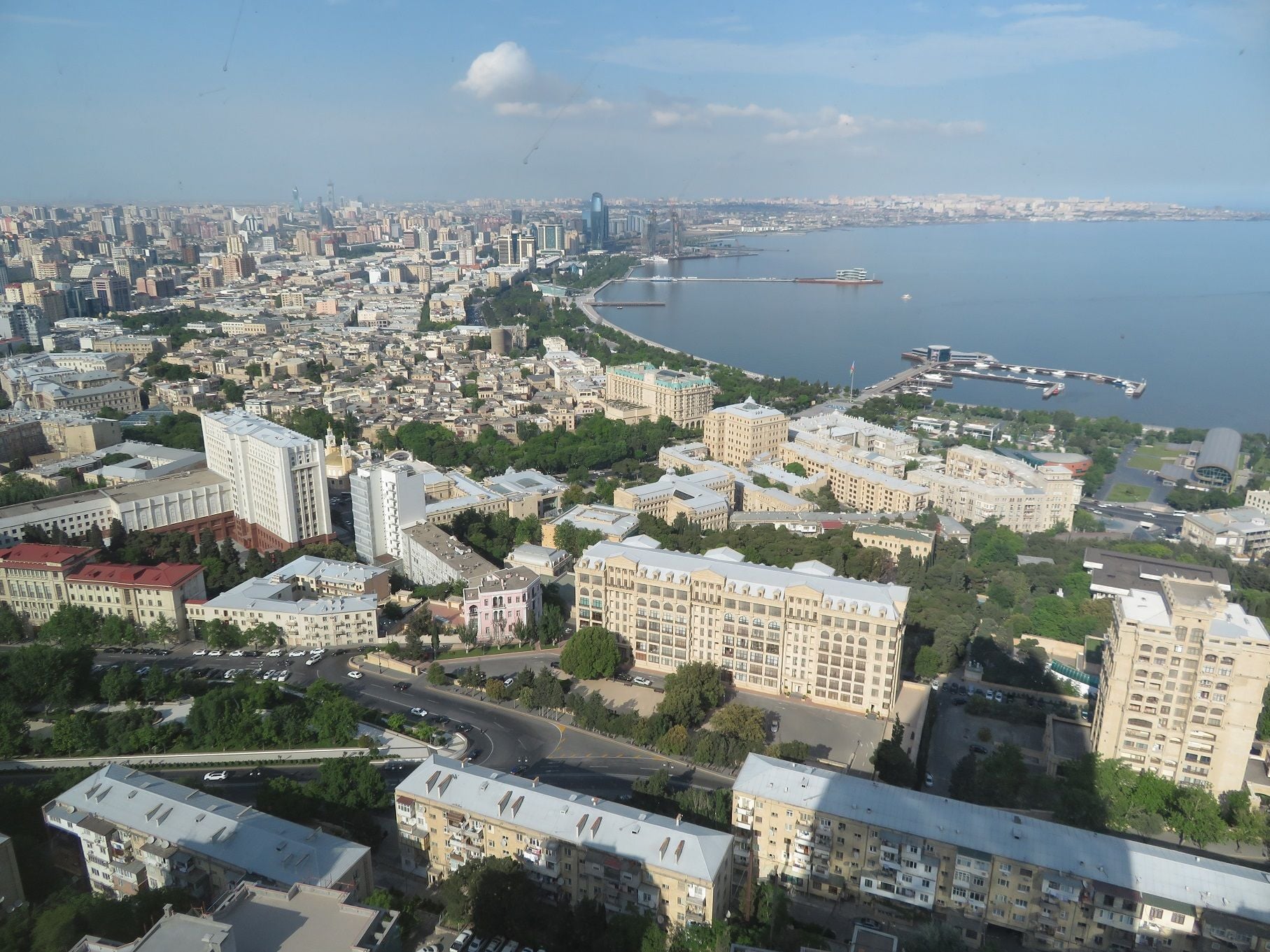Two Weeks in the South Caucasus: From Armenia to Azerbaijan by Way of Georgia
#21
Original Poster
Join Date: Sep 2012
Posts: 3,143
Likes: 0
Received 0 Likes
on
0 Posts
A few more photos to go along with the prose - all from Georgia.

Tbilisi skyline

Tbilisi skyline
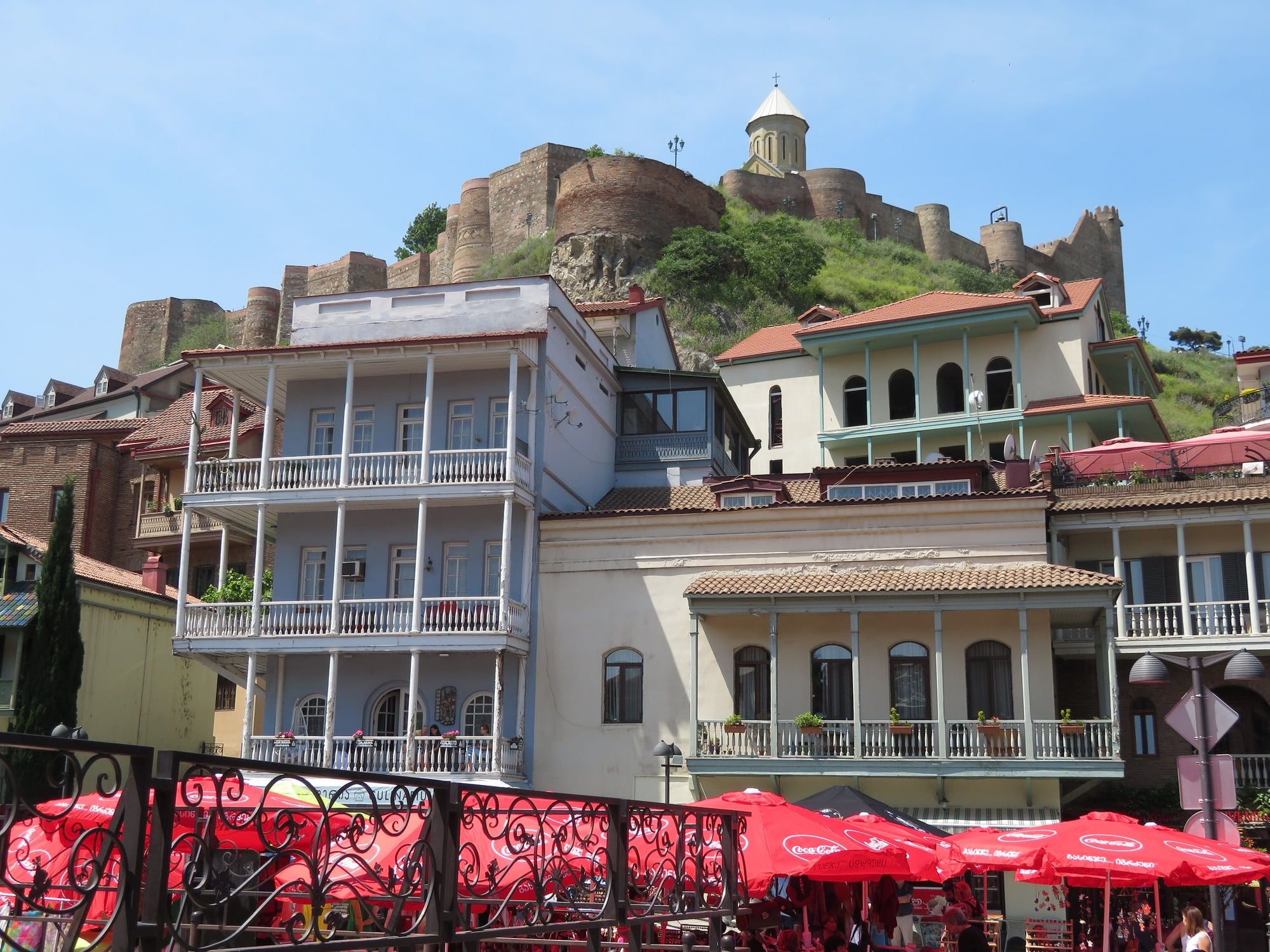
Narikala Fortress and Old Tbilisi

Old Tbilisi
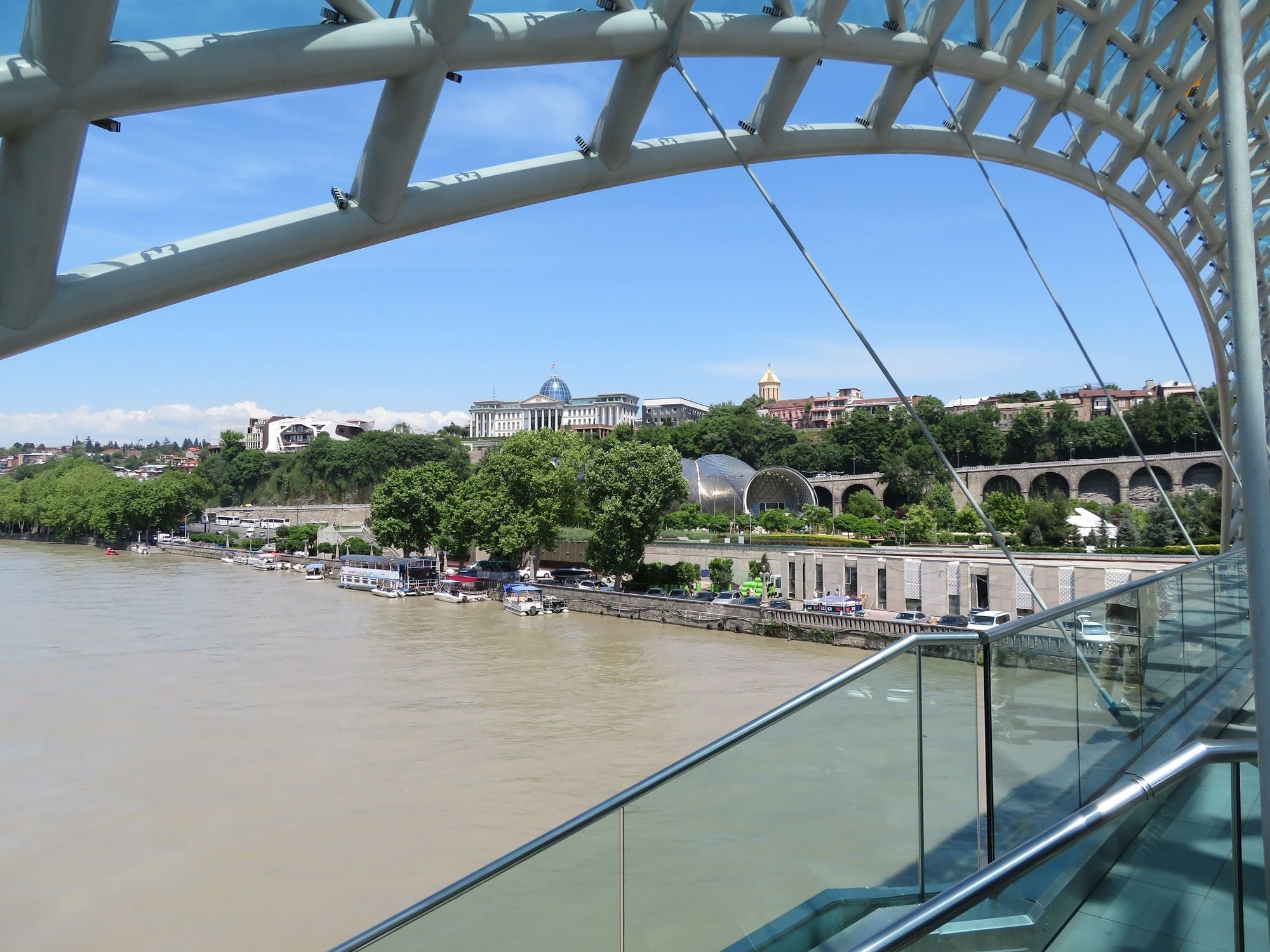
Tbilisi riverfront from Peace Bridge
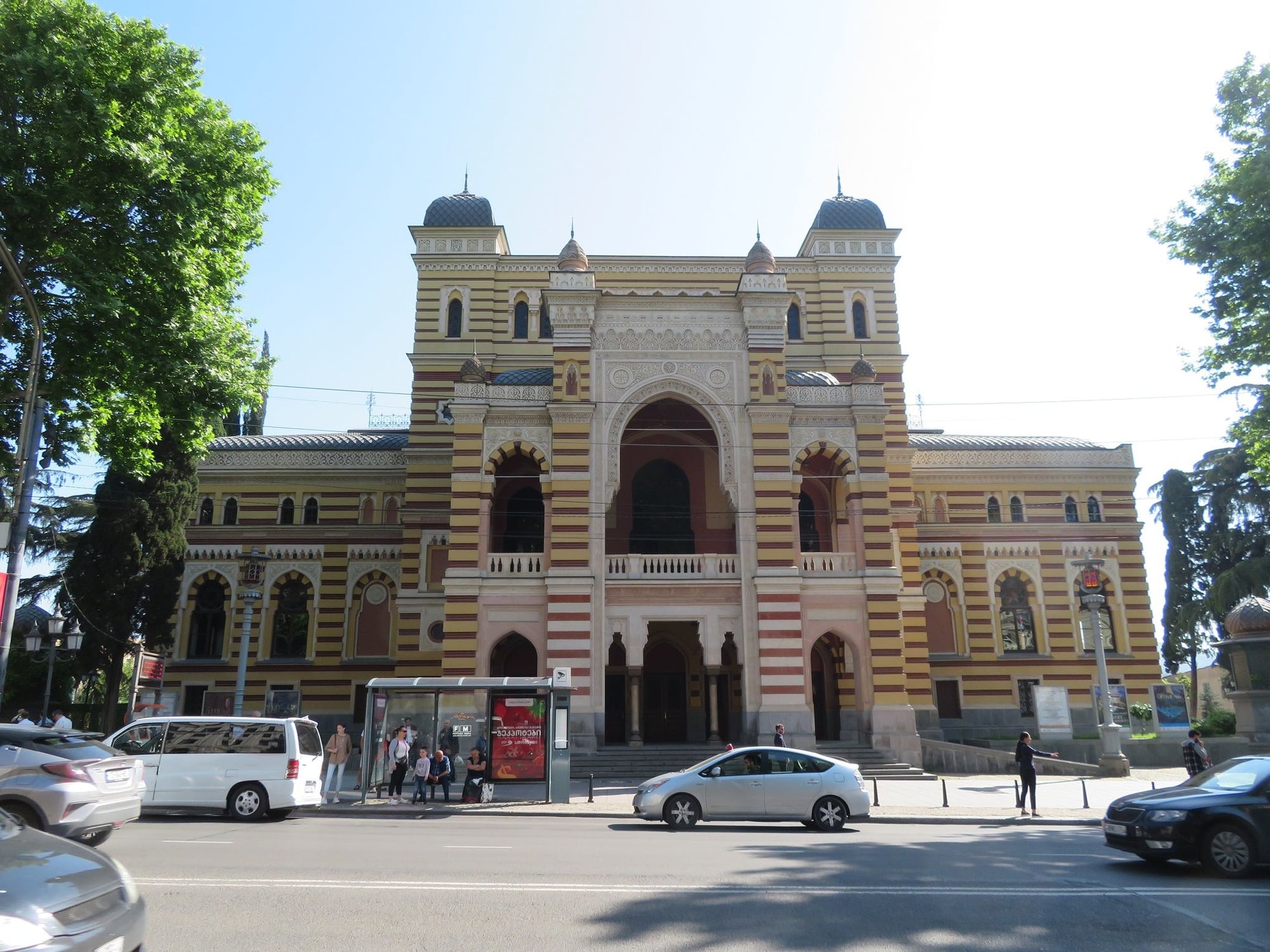
Tbilisi Opera House
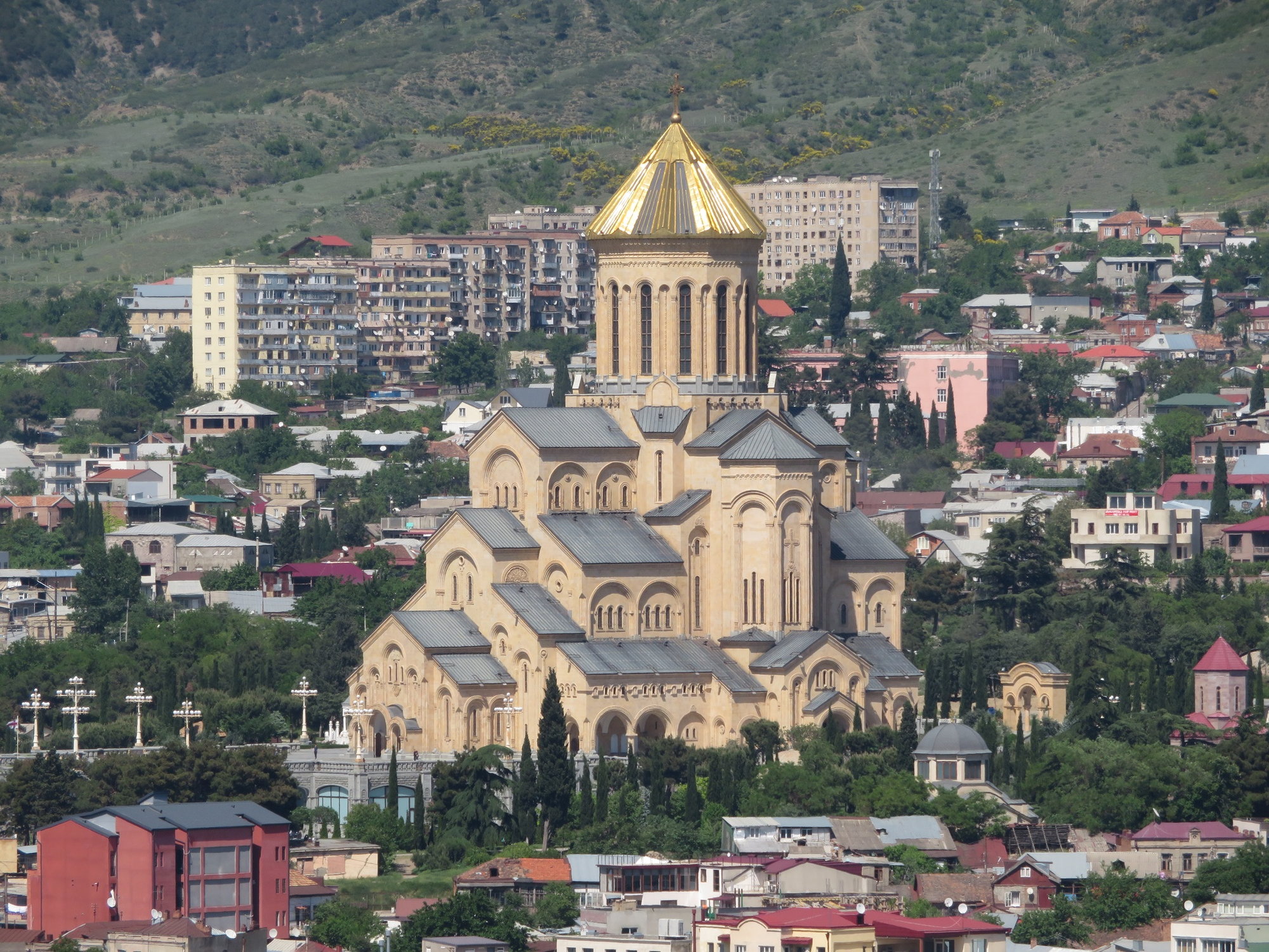
St. Trinity Cathedral

Inside St. Trinity
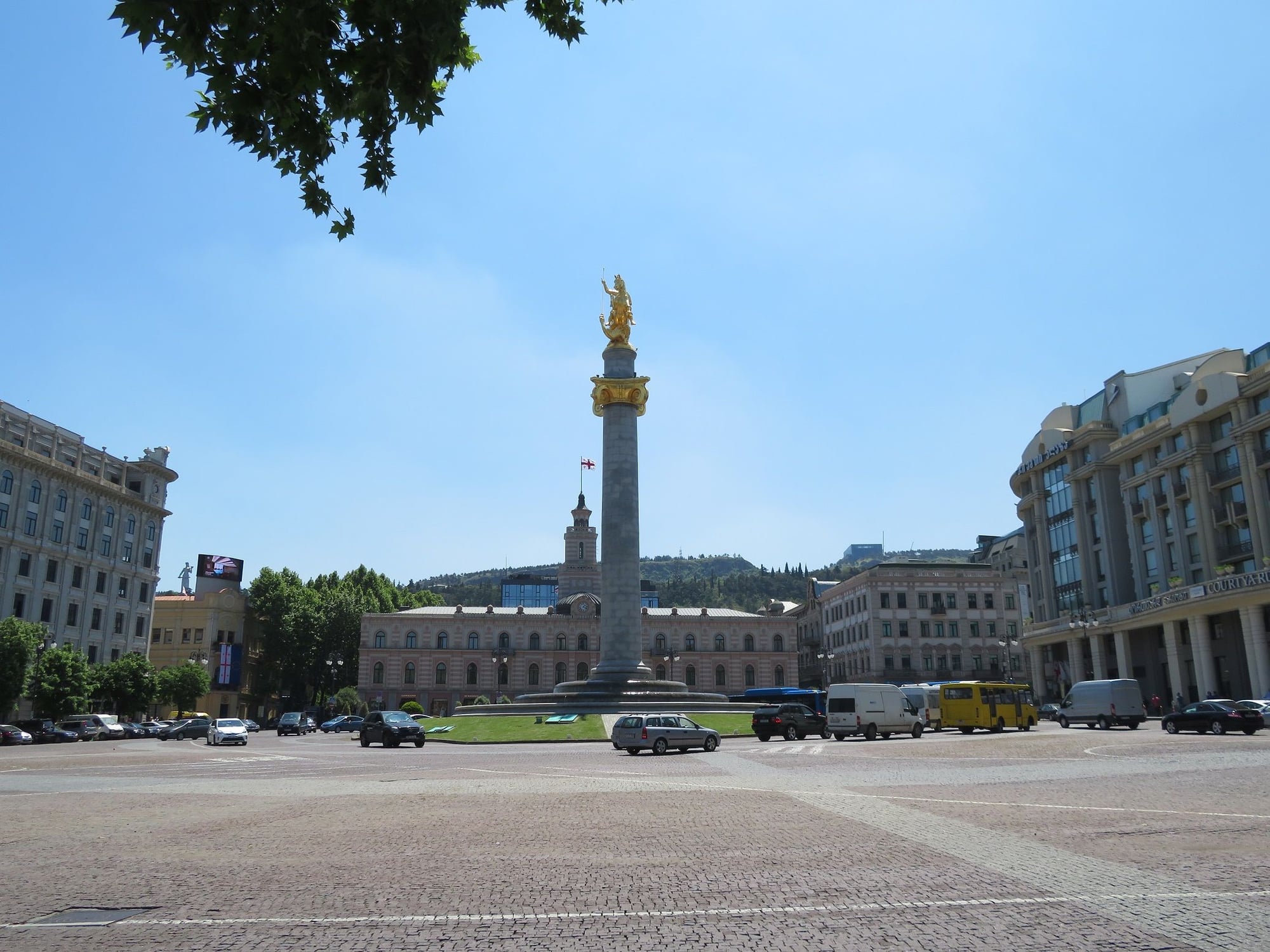
Freedom Square with Statue of St. George Slaying Dragon

Mother Georgia

Wooden Porches in Sololaki

Tbilisi skyline

Tbilisi skyline

Narikala Fortress and Old Tbilisi

Old Tbilisi

Tbilisi riverfront from Peace Bridge

Tbilisi Opera House

St. Trinity Cathedral

Inside St. Trinity

Freedom Square with Statue of St. George Slaying Dragon

Mother Georgia

Wooden Porches in Sololaki
#25
Original Poster
Join Date: Sep 2012
Posts: 3,143
Likes: 0
Received 0 Likes
on
0 Posts
Temples to Paganism, Christianity, and Communism
If Armenia still holds the status as a somewhat undiscovered destination, it is not the case in Georgia. We probably saw the most tourists today in our trip thus far. There were busloads of French-, German-, Korean-, and Russian-speaking tourists in each of the places we visited.
We have a day trip out of Tbilisi planned for this day. We would visit four places: Uplistsikhe Cave City, the Stalin Museum in Gori, Jvari Monastery, and Mtskheta Cathedral. We hired the services of Gamarjoba Georgia Tours for the day. Among all the tour operators we contacted, Gamarjoba was the most efficient and responsive. We had several correspondences with Abanoub, one of the co-owners of the travel agency. He is a delight to work with. As a result, we booked four different tours and transfers with Gamarjoba - all private.
We were met prompted at 9 in the morning by Lukas, our guide, and Emir, our driver. From there we set off for our first sight of the day: Uplistsikhe. Uplistsikhe is a city carved out of stone in ancient times. The city is home to a royal palace, several halls of political significance, a drug store, wine-making and storage facilities, pagan temples and Christian churches. Uplistsikhe was built before the arrival of Christianity in Georgia and the people still practiced paganism. Christian houses of worship were added later. Uplistsikhe began its decline with the growth of the new centers of Mtskheta and Tbilisi to the east. The city was partially destroyed by Mongols and fell into decline. Significant parts of the city was destroyed by an earthquake in 1920.
Our time with Lukas began roughly. Even though he is kind, energetic, friendly, and tries to be helpful, we did not immediately hit it off with him. Our annoyance with him hit a boiling point at Uplistsikhe, as he tried to take up quickly through the site and we wouldn't have it. Without our insistence, we would have only seen half of the sites in the city and we wanted more. Furthermore, we like to enjoy the places we visit, which means slowing down, taking photos, admiring what we were seeing, etc. There were a few times in which Lukas tried to skip over parts of the city, so we let him go on his way while we visited what we would have missed. And we had to let him know a few times that he was bombing our photo shots one after the other and that it wasn't cool. I don't think Lukas really received the drift at Uplistsikhe as the episodes repeated itself several more times.
Nonetheless we were glad we visited Uplistsikhe. We wound up spending 2.5 hours here. The site is very interesting and it reminded me of the Cappadocia region of Turkey. It was fun to wander among the buildings as well as admiring the beautiful views of the valley below. My favorites were the Roman-style theater, one of the pagan temples, the drug store, and the secret tunnel connecting the city to the nearby Mtkvari River to allow inhabitants to escape enemy invasion by water should it occur.

Panorama of Uplistsikhe
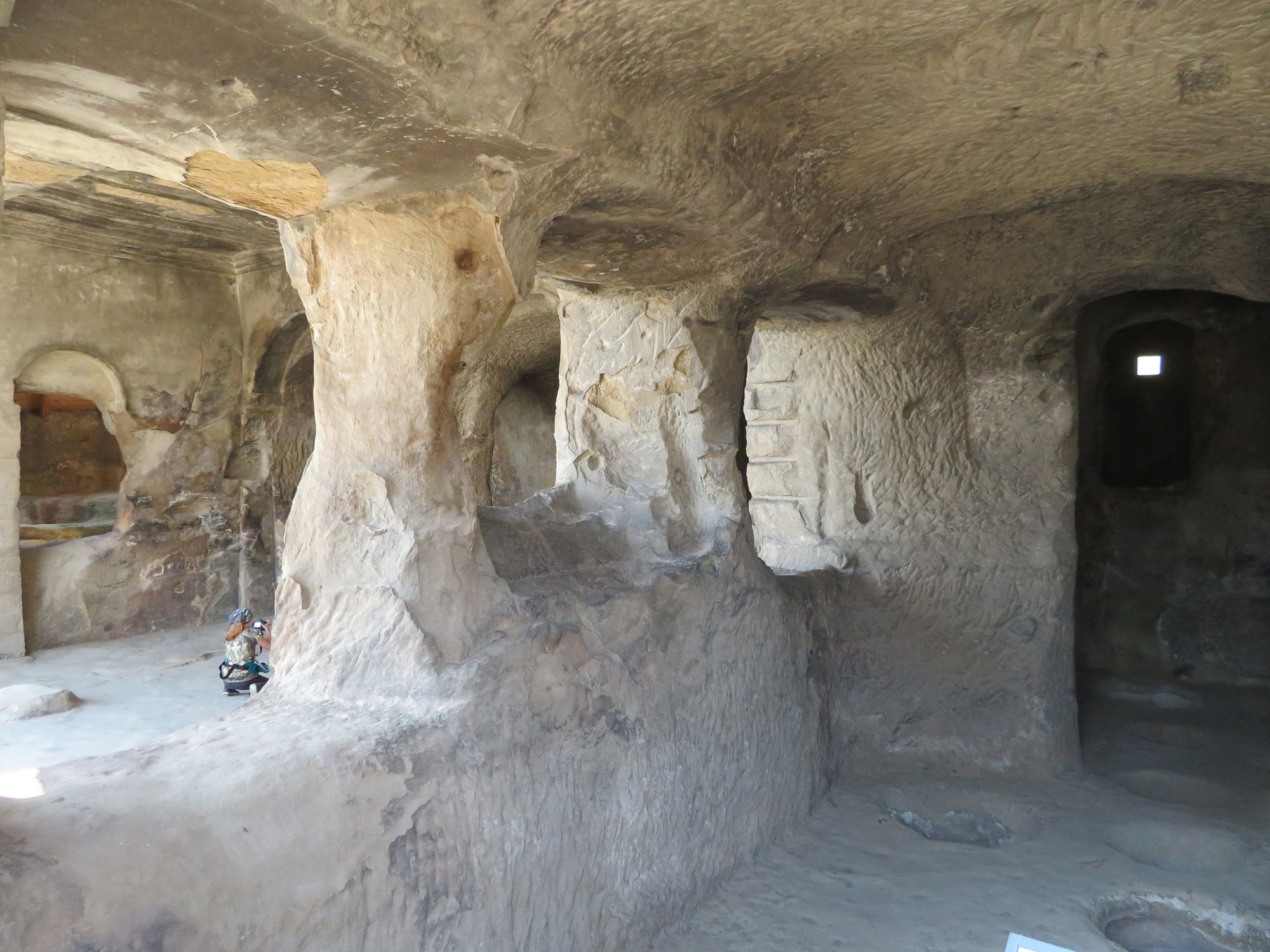
Stone walls and columns at Uplistsikhe
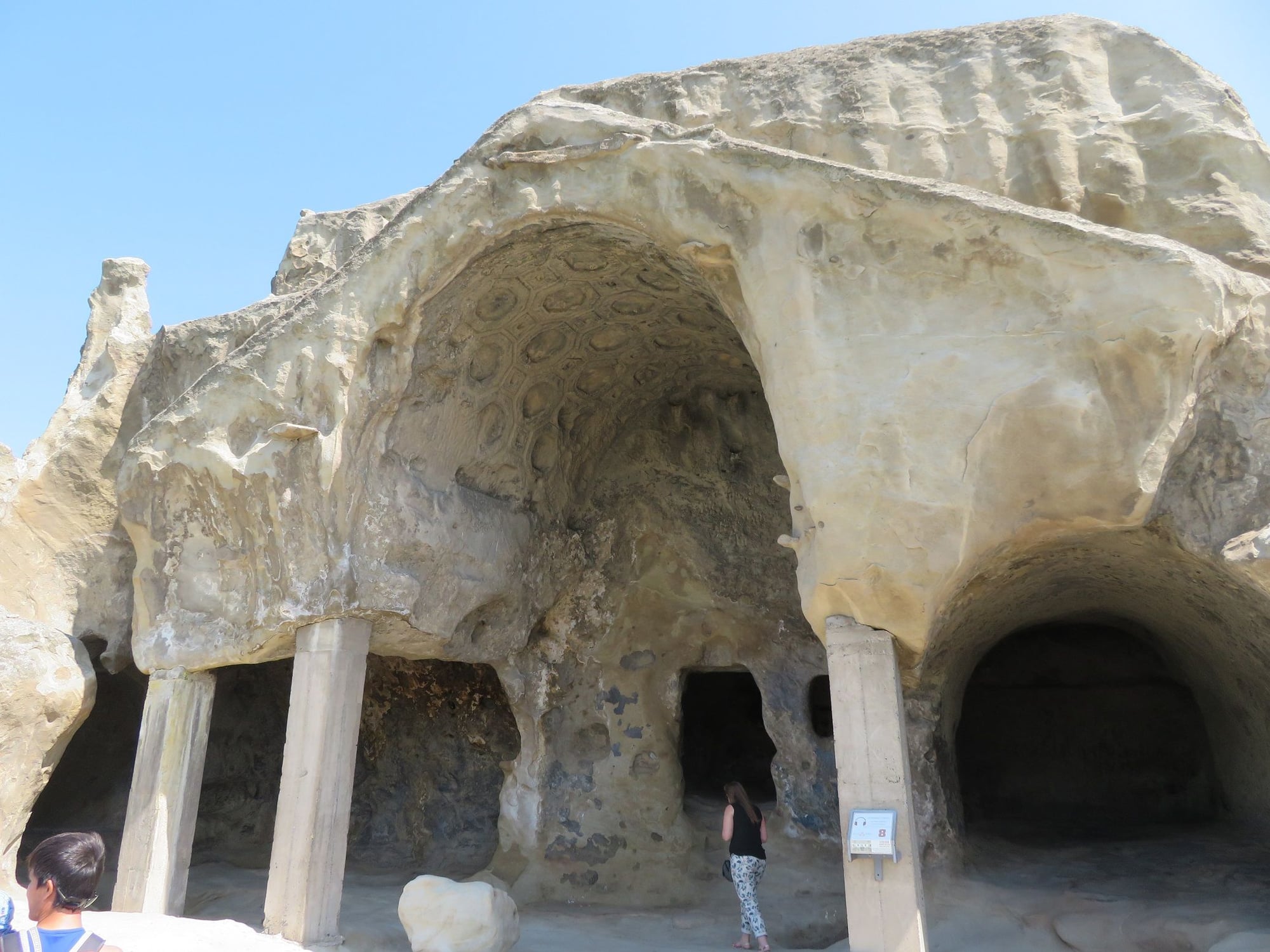
Roman-style theater at Uplistsihke

Christian church up top and pagan temple on the bottom at Uplistsikhe
From Uplistsikhe we started back to Tbilisi by way of Gori and Mtskheta. Gori is a small city about an hour west of Tbilisi and is infamous for being the birthplace and home of Joseph Stalin. Gori was also a site of Russian occupation during its 2008 war with Georgia over the Georgian territory of South Ossetia, which Russia occupies to this day. In any case, we were in Gori to visit the Stalin Museum. There were a large array of interesting photos, painting, and memorabilia about the person, his troubled early years, his rise to power, and the mark he left on the former Soviet Union. Stalin's boyhood home is also on the grounds of the museum as is his private train carriage.
From Gori we headed to the outskirts of Mtskheta for a nice lunch. We bonded with him some, which made things easier on both parties.
Following lunch, we visited Jvari Monastery, which sits on top of a mountain overlooking the confluence of the Mtkvari and Aragvi Rivers and the city of Mtskheta. The monastery was interesting to see, and we were able to enjoy more time there - thanks to Lukas getting our message and not resisting it. Jvari is significant as it is part of the Georgian national narrative of the adoption of Christianity and its early years in the country, as is the Cathedral in Mtskheta. Both are listed as UNESCO World Heritage sites. Mtskheta's Svetitskhoveli Catherdral was constructed in the 4th century and expanded in later years. Operating as sort of the Westminster of Georgia, the cathedral contains the tombs of several Georgian royalty as well as other key stakeholders. Svetitskhoveli is also hom to a plethora of religious icons, frescos, and paintings. We ended our visit to the cathedral by visiting the tourist stalls all around the church.
From Mtskheta it was a relative short ride back to Tbilisi but not before stopping at Gamarjoba's travel agency in town for a quick visit. Each of the four young co-owners of the business were there. They greeted us and chatted for us for a bit while we handled all our formalities.
For dinner, we headed back to Pasanauri and had yet another phenomenal meal. We were so fortunate to meet with the owner and express our gratitude to her for the food she and her staff prepared.
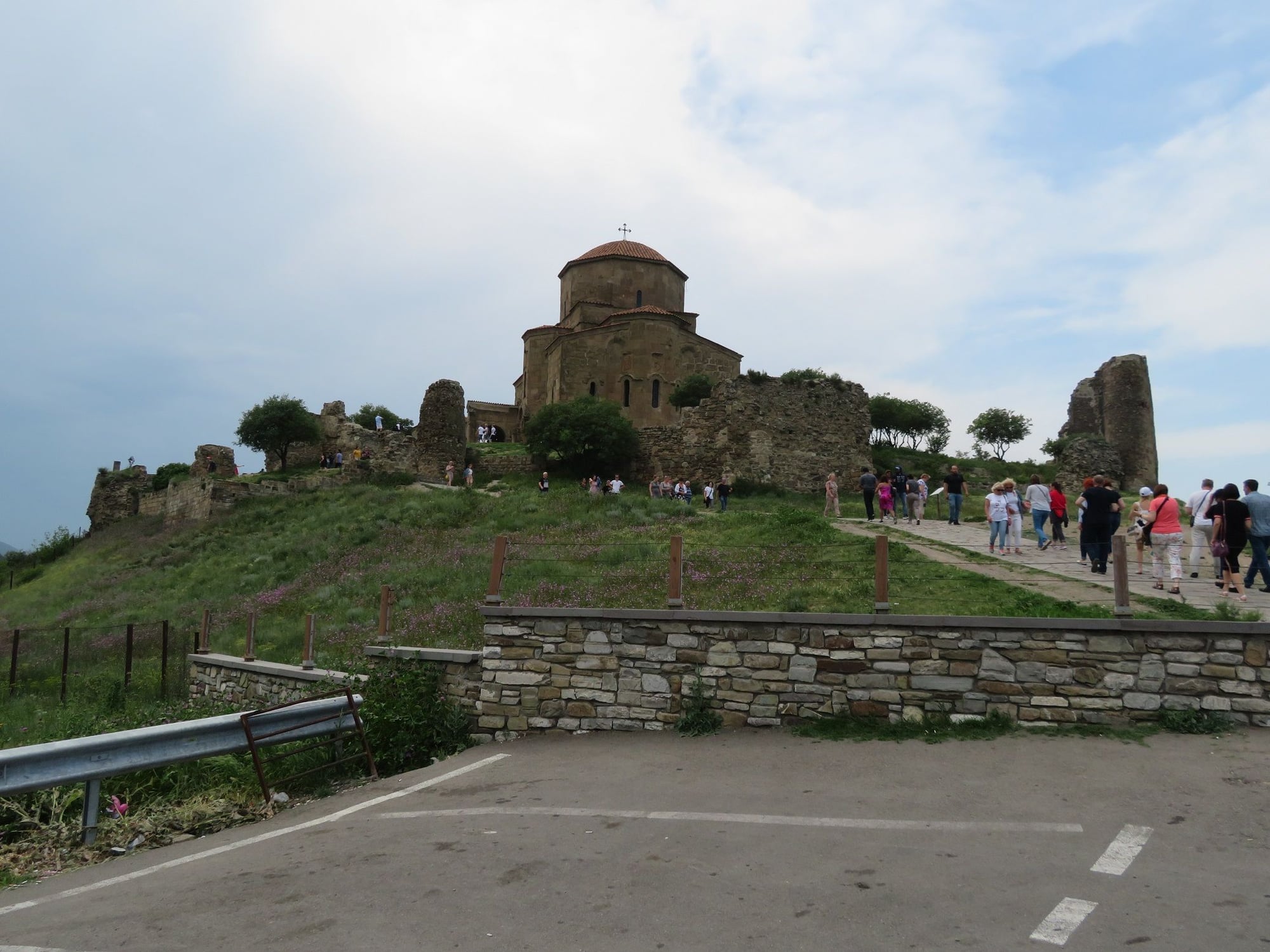
Svetitskhoveli Cathedral, Mtskheta

Inside Svetitskhoveli Cathedral

Joseph Stalin's boyhood home
If Armenia still holds the status as a somewhat undiscovered destination, it is not the case in Georgia. We probably saw the most tourists today in our trip thus far. There were busloads of French-, German-, Korean-, and Russian-speaking tourists in each of the places we visited.
We have a day trip out of Tbilisi planned for this day. We would visit four places: Uplistsikhe Cave City, the Stalin Museum in Gori, Jvari Monastery, and Mtskheta Cathedral. We hired the services of Gamarjoba Georgia Tours for the day. Among all the tour operators we contacted, Gamarjoba was the most efficient and responsive. We had several correspondences with Abanoub, one of the co-owners of the travel agency. He is a delight to work with. As a result, we booked four different tours and transfers with Gamarjoba - all private.
We were met prompted at 9 in the morning by Lukas, our guide, and Emir, our driver. From there we set off for our first sight of the day: Uplistsikhe. Uplistsikhe is a city carved out of stone in ancient times. The city is home to a royal palace, several halls of political significance, a drug store, wine-making and storage facilities, pagan temples and Christian churches. Uplistsikhe was built before the arrival of Christianity in Georgia and the people still practiced paganism. Christian houses of worship were added later. Uplistsikhe began its decline with the growth of the new centers of Mtskheta and Tbilisi to the east. The city was partially destroyed by Mongols and fell into decline. Significant parts of the city was destroyed by an earthquake in 1920.
Our time with Lukas began roughly. Even though he is kind, energetic, friendly, and tries to be helpful, we did not immediately hit it off with him. Our annoyance with him hit a boiling point at Uplistsikhe, as he tried to take up quickly through the site and we wouldn't have it. Without our insistence, we would have only seen half of the sites in the city and we wanted more. Furthermore, we like to enjoy the places we visit, which means slowing down, taking photos, admiring what we were seeing, etc. There were a few times in which Lukas tried to skip over parts of the city, so we let him go on his way while we visited what we would have missed. And we had to let him know a few times that he was bombing our photo shots one after the other and that it wasn't cool. I don't think Lukas really received the drift at Uplistsikhe as the episodes repeated itself several more times.
Nonetheless we were glad we visited Uplistsikhe. We wound up spending 2.5 hours here. The site is very interesting and it reminded me of the Cappadocia region of Turkey. It was fun to wander among the buildings as well as admiring the beautiful views of the valley below. My favorites were the Roman-style theater, one of the pagan temples, the drug store, and the secret tunnel connecting the city to the nearby Mtkvari River to allow inhabitants to escape enemy invasion by water should it occur.

Panorama of Uplistsikhe

Stone walls and columns at Uplistsikhe

Roman-style theater at Uplistsihke

Christian church up top and pagan temple on the bottom at Uplistsikhe
From Uplistsikhe we started back to Tbilisi by way of Gori and Mtskheta. Gori is a small city about an hour west of Tbilisi and is infamous for being the birthplace and home of Joseph Stalin. Gori was also a site of Russian occupation during its 2008 war with Georgia over the Georgian territory of South Ossetia, which Russia occupies to this day. In any case, we were in Gori to visit the Stalin Museum. There were a large array of interesting photos, painting, and memorabilia about the person, his troubled early years, his rise to power, and the mark he left on the former Soviet Union. Stalin's boyhood home is also on the grounds of the museum as is his private train carriage.
From Gori we headed to the outskirts of Mtskheta for a nice lunch. We bonded with him some, which made things easier on both parties.
Following lunch, we visited Jvari Monastery, which sits on top of a mountain overlooking the confluence of the Mtkvari and Aragvi Rivers and the city of Mtskheta. The monastery was interesting to see, and we were able to enjoy more time there - thanks to Lukas getting our message and not resisting it. Jvari is significant as it is part of the Georgian national narrative of the adoption of Christianity and its early years in the country, as is the Cathedral in Mtskheta. Both are listed as UNESCO World Heritage sites. Mtskheta's Svetitskhoveli Catherdral was constructed in the 4th century and expanded in later years. Operating as sort of the Westminster of Georgia, the cathedral contains the tombs of several Georgian royalty as well as other key stakeholders. Svetitskhoveli is also hom to a plethora of religious icons, frescos, and paintings. We ended our visit to the cathedral by visiting the tourist stalls all around the church.
From Mtskheta it was a relative short ride back to Tbilisi but not before stopping at Gamarjoba's travel agency in town for a quick visit. Each of the four young co-owners of the business were there. They greeted us and chatted for us for a bit while we handled all our formalities.
For dinner, we headed back to Pasanauri and had yet another phenomenal meal. We were so fortunate to meet with the owner and express our gratitude to her for the food she and her staff prepared.

Svetitskhoveli Cathedral, Mtskheta

Inside Svetitskhoveli Cathedral

Joseph Stalin's boyhood home
#26
Interested to hear that tourism has arrived in Georgia. When I was there (ten years ago!) there were a number of Israeli independents (there were direct flights from Israel) and I think I encountered one small French tour group, but that was pretty much it. of course, it was shortly after the Russian invasion, which may have had a dampening effect. It looks like there has been a lot of renovation on the churches, at least.
#27
Original Poster
Join Date: Sep 2012
Posts: 3,143
Likes: 0
Received 0 Likes
on
0 Posts
Thursdaysd: What a difference 10 years make! I assume Armenia is not far behind on tourism as several of the tour groups now combine Georgia with Armenia. From what I've been hearing so far, it seems Azerbaijan remains untouched. We'll see firsthand for ourselves in a few days.
Into the Mountains
Today would be the day we leave Tbilisi heading north, into the Caucasus Mountains from where the region in which we are travelling gets its name. Our destination - the town of Kazbegi at the foothill of Mount Kazbek, a 16,000-foot mountain that is the third highest in Georgia and seventh in all of the Caucasus. For the ride up we again used the services of Gamarjoba Georgia Tours. We were met promptly at 9 by Lukas and Emir once more and set off. One hiccup - the van we were using was too small to hold us and our luggage, despite the fact that we travel lightly (4 carryons, one for each of us, and 2 small backpacks). We struggled to get everything into the vehicle, which mean we had to ride with some of our luggage. Not the most comfortable. I made sure to let the agency know that we need larger vehicles for the other two days we had booked with them.Our first stop to Kazbegi is Ananuri Fortress, built in the 13th century by a local duke. The outer walls of the fortress is impressive and contains a tower, a Georgian Orthodox church, and a handful of lookouts over the Aragvi River. We spent about an hour here, climbing the fortress walls and up to the tower and enjoying the views from high ground. We also enjoyed some time inside the church and were able to listen to part of the mass.
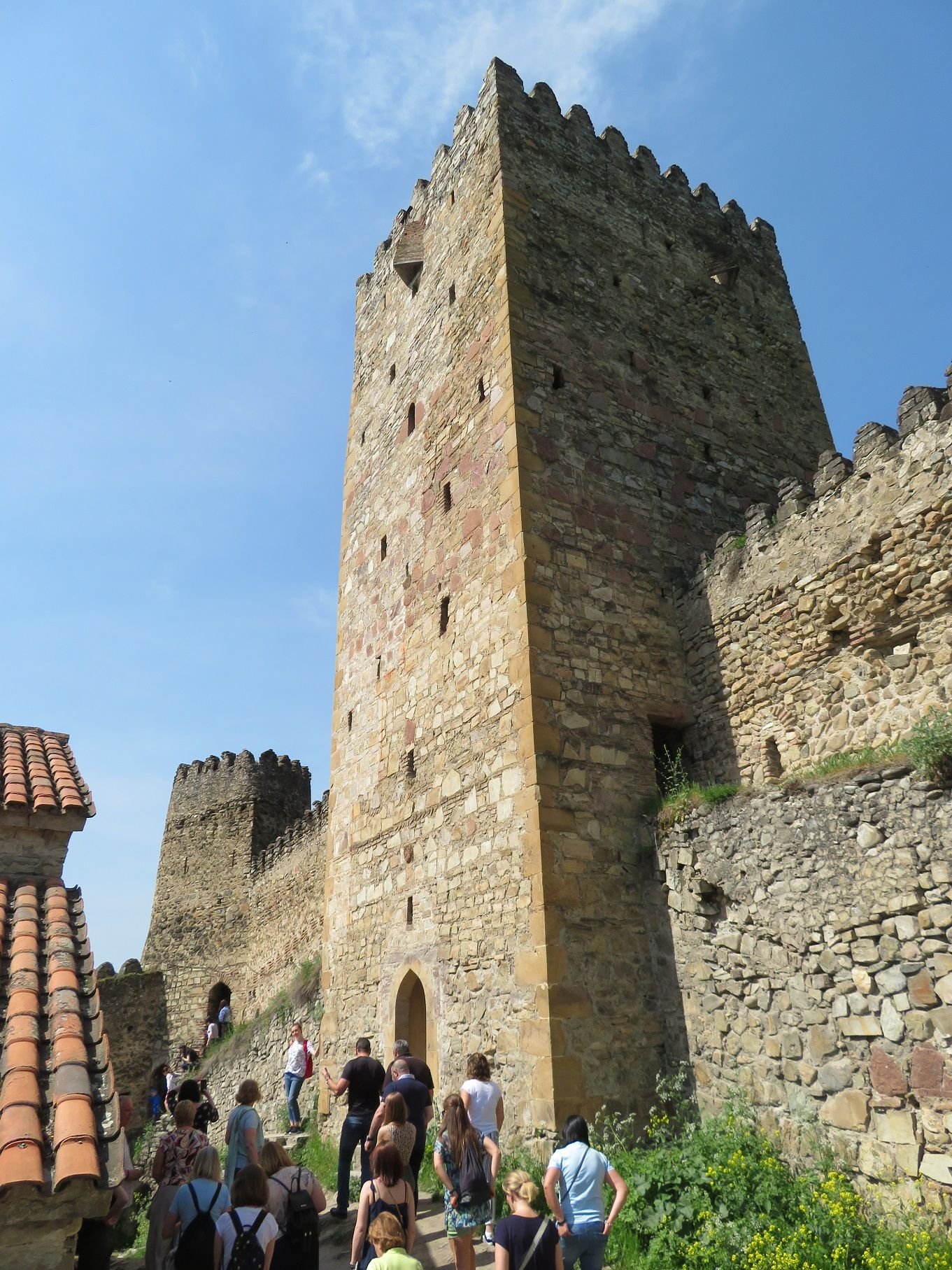
Ananuri Fortress Tower

Church inside Ananuri Fortress

Inside Ananuri Church (I love the way the sunlight shines into the church)

Lookout from Ananuri Fortress; the view is of the Aragvi River
From Ananuri we continued along the Georgian Military Highway, which goes through the Caucasus Mountains and into Russia. We made a few more stops along the way, to sample locally-produced honey, for photo stops, lunch, etc.
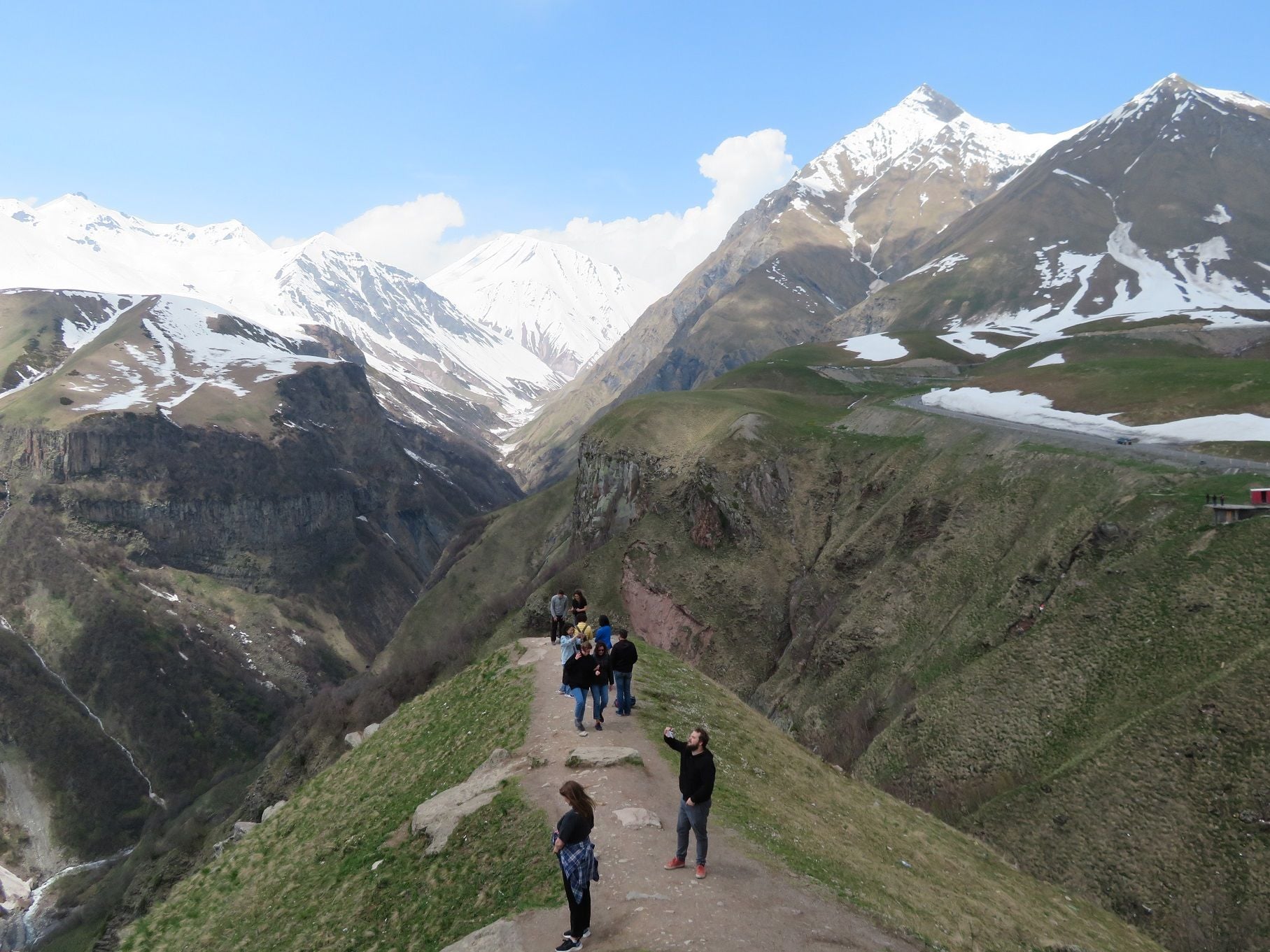
Caucasus Mountains

Rocks stained by mineral-enriched waters along the Georgian Military Highway
We arrived in Kazbegi at around 2 and immediately checked into our hotel - Rooms Hotel Kazbegi. We had booked 2 nights at Rooms, a minimum for us in places that we use as bases for mountain hikes as we never know what the weather will bring. The forecast was for rain both days. We were lucky in that today was sunny and warm, not only on the way up to Kazbegi but when we were in town itself. The summit and surrounding peaks were in full view.Giddy at the views of the mountains and not wanting to press our luck on weather tomorrow, we set out for the hike as soon as we dropped off our bags in our rooms. The hike from the town of Kazbegi up to Gergeti Trinity Church takes about 1.5 to 2 hours. We walked through town, purchased a few bottles of water and snacks, and began the ascent. The first section is on paved roads through the village right above town. From there we hiked up into the mountains. The immediate section was probably the most challenging of the hike, given loose rocks and gravel. Once we made it up this section to some ruins on top, then the rest of the way was relatively easy. The dirt path was wide enough that we didn't have to worry about falling. And it was mostly a combination of flat ground and gentle ascents. All along the way we had glorious views of the snow-capped peaks all around us. For most of the time we were not able to see the church. By the time we caught glimpse of it again, it was a straight ascent, although very gentle. We spent a good two hours at the church, mostly to relax and enjoy the incredible views, including Mount Kazbek in its full glory.
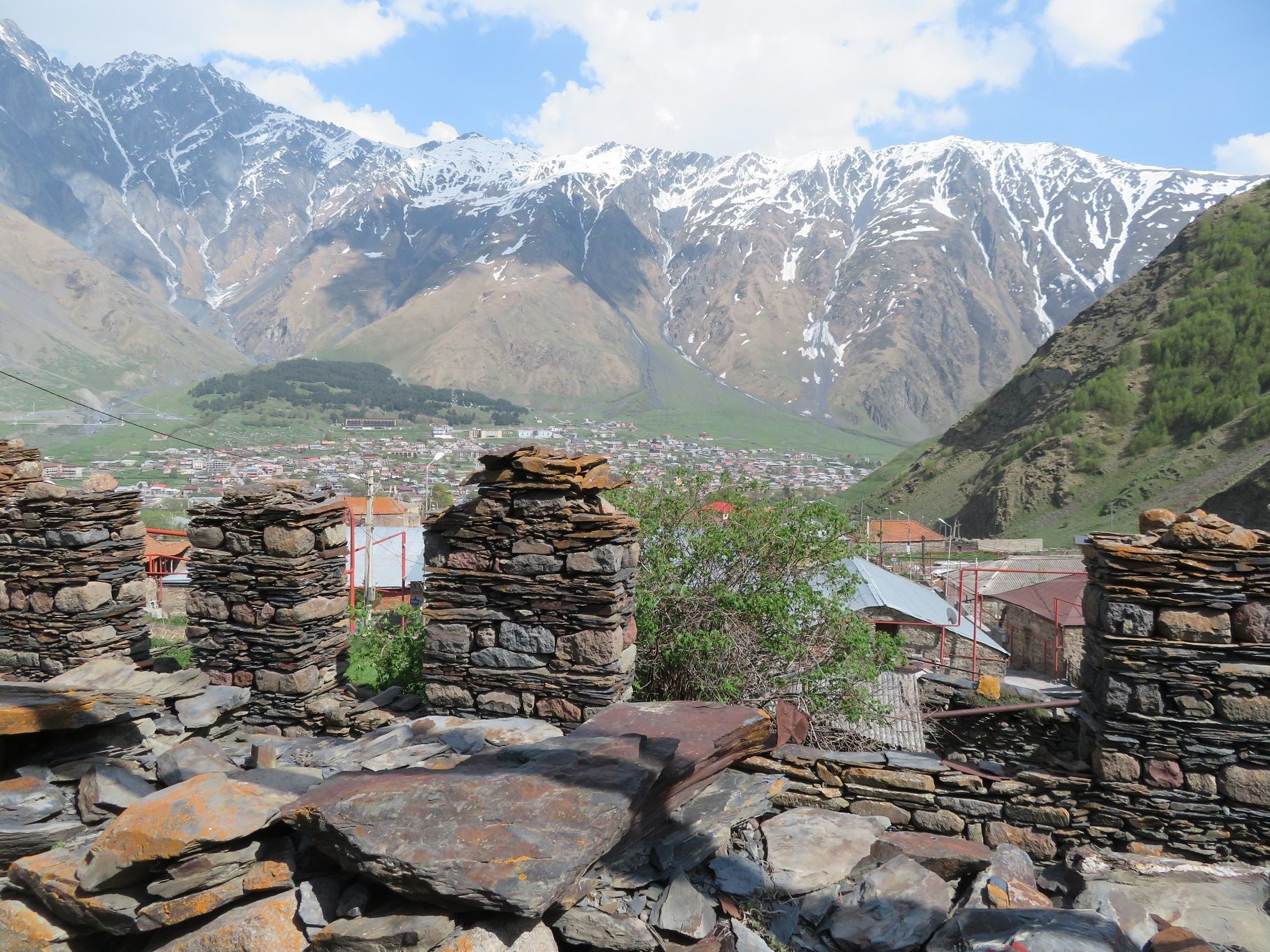
Caucasus Mountains with Kazbegi below
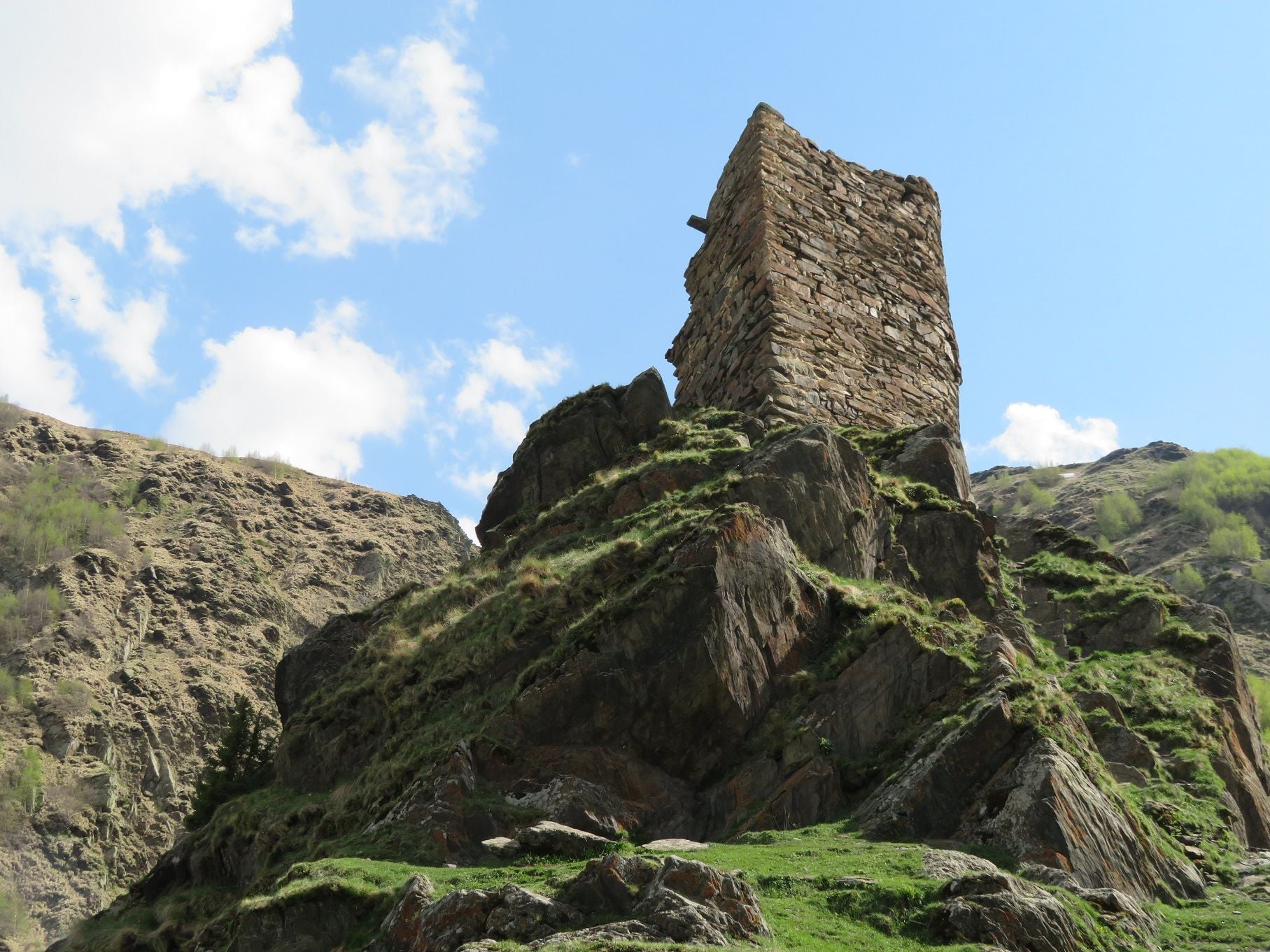
Ruins along the hike up to Gergeti Trinity Church (this is about the half-way point)
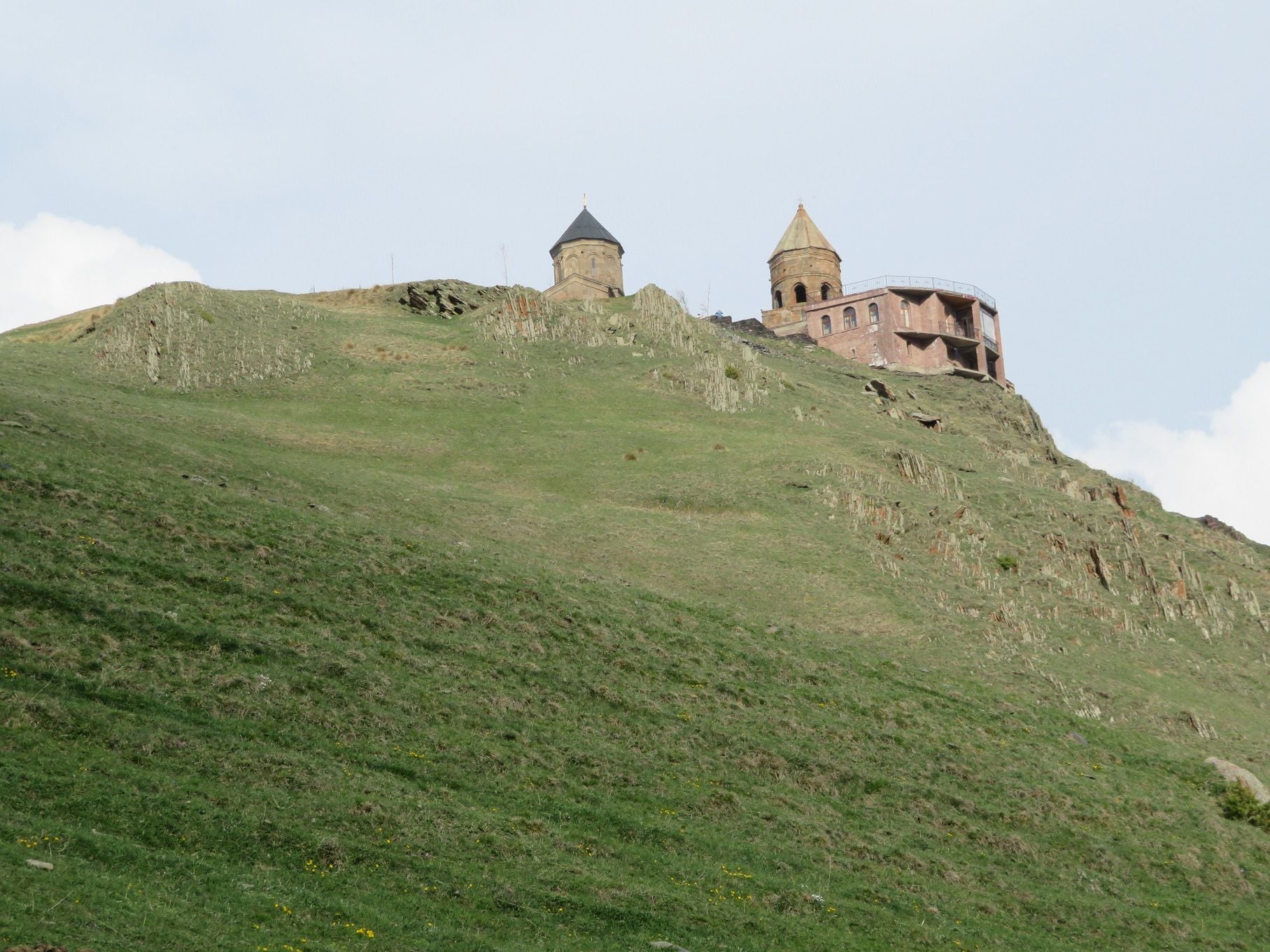
Gergeti Trinity Church
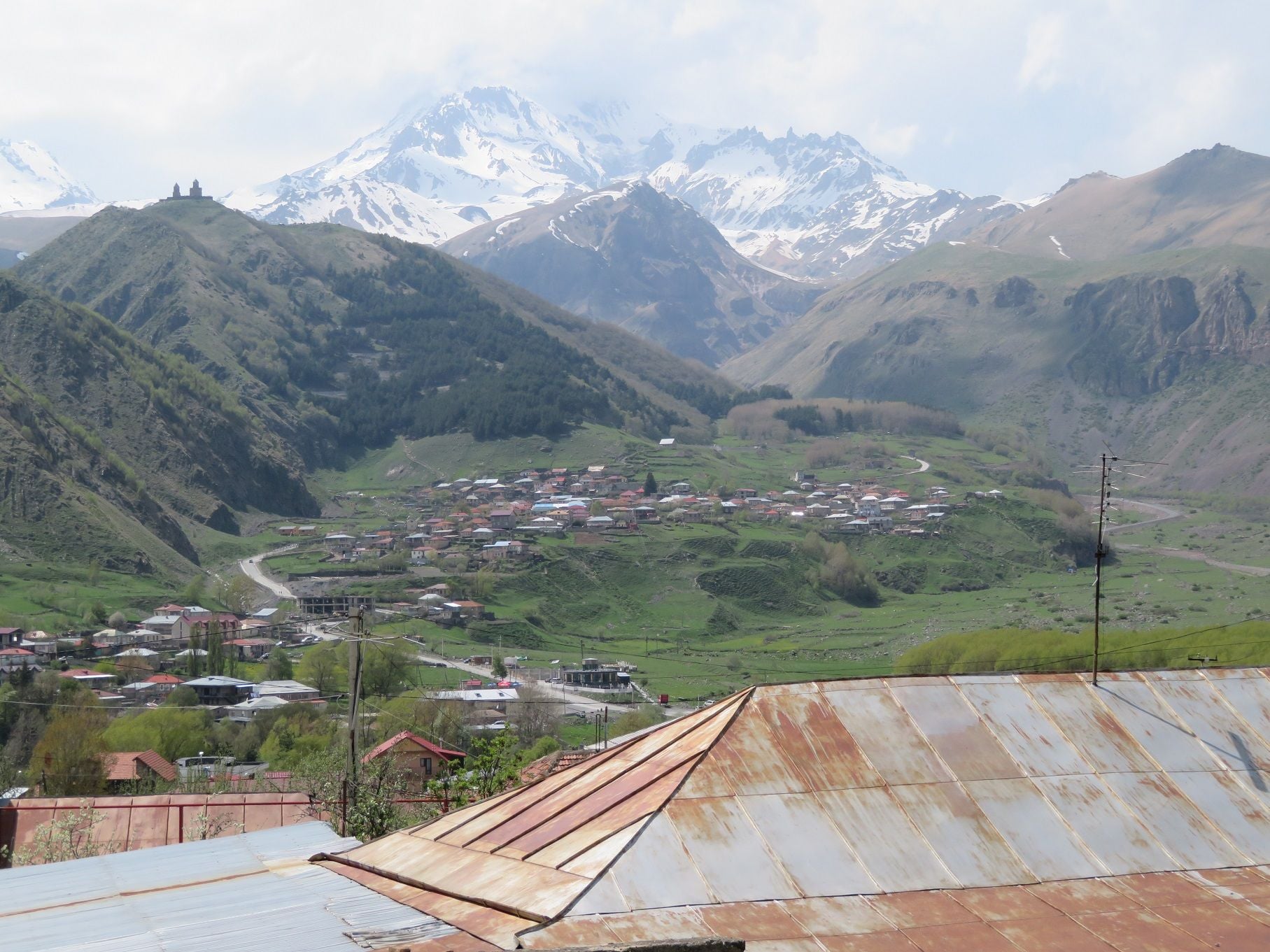
Mount Kazbek
There are a couple of paths up and down between the town and the church. We took a different path on the way down, mostly following a two-lane paved road down until we reached the village at the foothill of the mountain. The full descent took about an hour, although it took another 20-30 minutes to get from the base of the village to our hotel. We did it!We'll just have to find something else to do tomorrow, assuming the weather holds.
Into the Mountains
Today would be the day we leave Tbilisi heading north, into the Caucasus Mountains from where the region in which we are travelling gets its name. Our destination - the town of Kazbegi at the foothill of Mount Kazbek, a 16,000-foot mountain that is the third highest in Georgia and seventh in all of the Caucasus. For the ride up we again used the services of Gamarjoba Georgia Tours. We were met promptly at 9 by Lukas and Emir once more and set off. One hiccup - the van we were using was too small to hold us and our luggage, despite the fact that we travel lightly (4 carryons, one for each of us, and 2 small backpacks). We struggled to get everything into the vehicle, which mean we had to ride with some of our luggage. Not the most comfortable. I made sure to let the agency know that we need larger vehicles for the other two days we had booked with them.Our first stop to Kazbegi is Ananuri Fortress, built in the 13th century by a local duke. The outer walls of the fortress is impressive and contains a tower, a Georgian Orthodox church, and a handful of lookouts over the Aragvi River. We spent about an hour here, climbing the fortress walls and up to the tower and enjoying the views from high ground. We also enjoyed some time inside the church and were able to listen to part of the mass.

Ananuri Fortress Tower

Church inside Ananuri Fortress

Inside Ananuri Church (I love the way the sunlight shines into the church)

Lookout from Ananuri Fortress; the view is of the Aragvi River
From Ananuri we continued along the Georgian Military Highway, which goes through the Caucasus Mountains and into Russia. We made a few more stops along the way, to sample locally-produced honey, for photo stops, lunch, etc.

Caucasus Mountains

Rocks stained by mineral-enriched waters along the Georgian Military Highway
We arrived in Kazbegi at around 2 and immediately checked into our hotel - Rooms Hotel Kazbegi. We had booked 2 nights at Rooms, a minimum for us in places that we use as bases for mountain hikes as we never know what the weather will bring. The forecast was for rain both days. We were lucky in that today was sunny and warm, not only on the way up to Kazbegi but when we were in town itself. The summit and surrounding peaks were in full view.Giddy at the views of the mountains and not wanting to press our luck on weather tomorrow, we set out for the hike as soon as we dropped off our bags in our rooms. The hike from the town of Kazbegi up to Gergeti Trinity Church takes about 1.5 to 2 hours. We walked through town, purchased a few bottles of water and snacks, and began the ascent. The first section is on paved roads through the village right above town. From there we hiked up into the mountains. The immediate section was probably the most challenging of the hike, given loose rocks and gravel. Once we made it up this section to some ruins on top, then the rest of the way was relatively easy. The dirt path was wide enough that we didn't have to worry about falling. And it was mostly a combination of flat ground and gentle ascents. All along the way we had glorious views of the snow-capped peaks all around us. For most of the time we were not able to see the church. By the time we caught glimpse of it again, it was a straight ascent, although very gentle. We spent a good two hours at the church, mostly to relax and enjoy the incredible views, including Mount Kazbek in its full glory.

Caucasus Mountains with Kazbegi below

Ruins along the hike up to Gergeti Trinity Church (this is about the half-way point)

Gergeti Trinity Church

Mount Kazbek
There are a couple of paths up and down between the town and the church. We took a different path on the way down, mostly following a two-lane paved road down until we reached the village at the foothill of the mountain. The full descent took about an hour, although it took another 20-30 minutes to get from the base of the village to our hotel. We did it!We'll just have to find something else to do tomorrow, assuming the weather holds.
Last edited by tripplanner001; May 19th, 2019 at 07:41 PM.
#28
Original Poster
Join Date: Sep 2012
Posts: 3,143
Likes: 0
Received 0 Likes
on
0 Posts
Mountain Magic
What a glorious day! Just returned from a couple of half-day hikes into the stunning Caucasus Mountains - in some sunshine. The weather held up most of the day so we decided to venture out again - to the Sno and Truso Valleys. Instead of boring you with too much prose, today's installment is a collection of my favorite pics from our excursions. If you have questions, I'd be happy to answer them.
Without further ado, please enjoy.
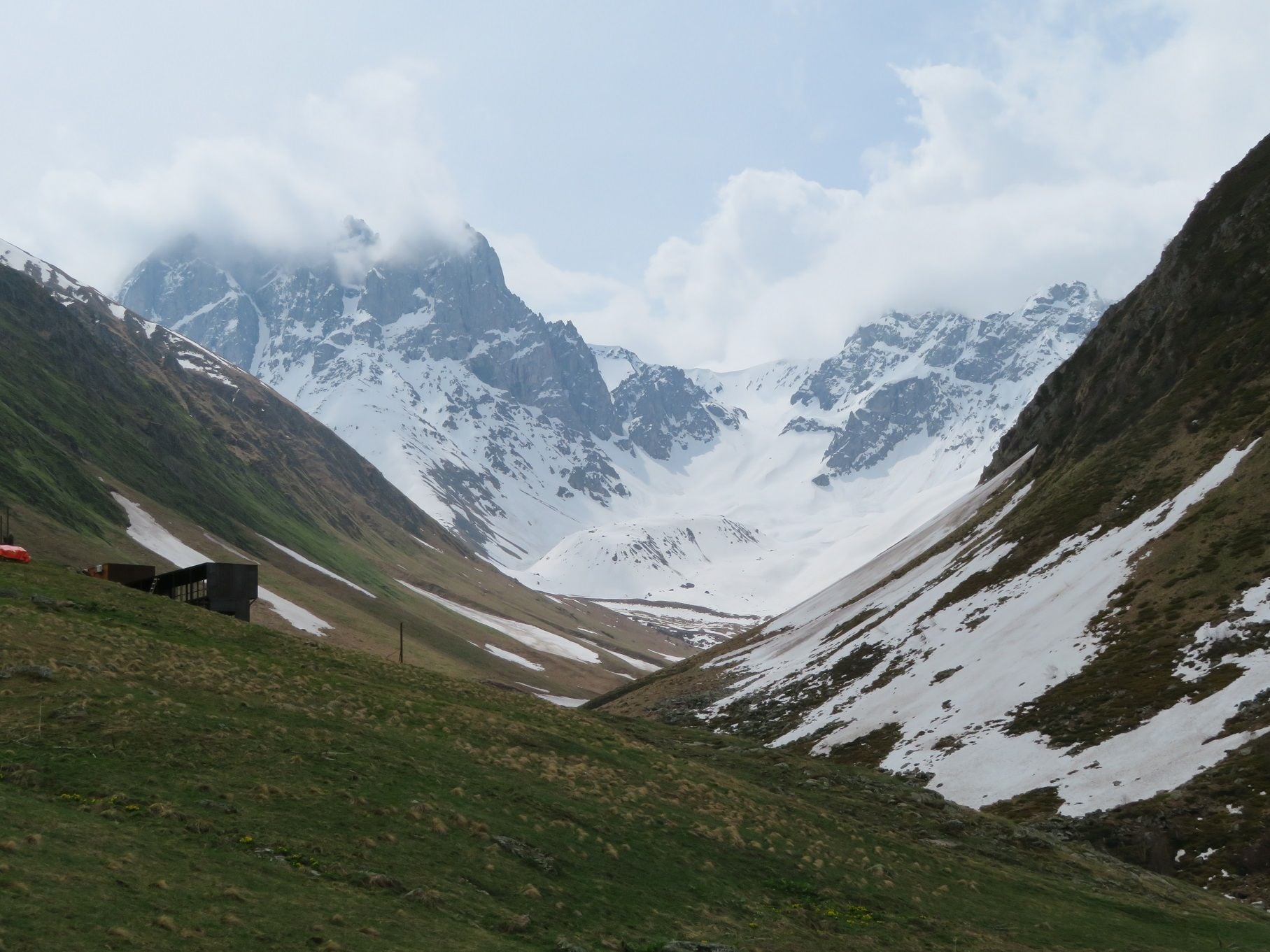

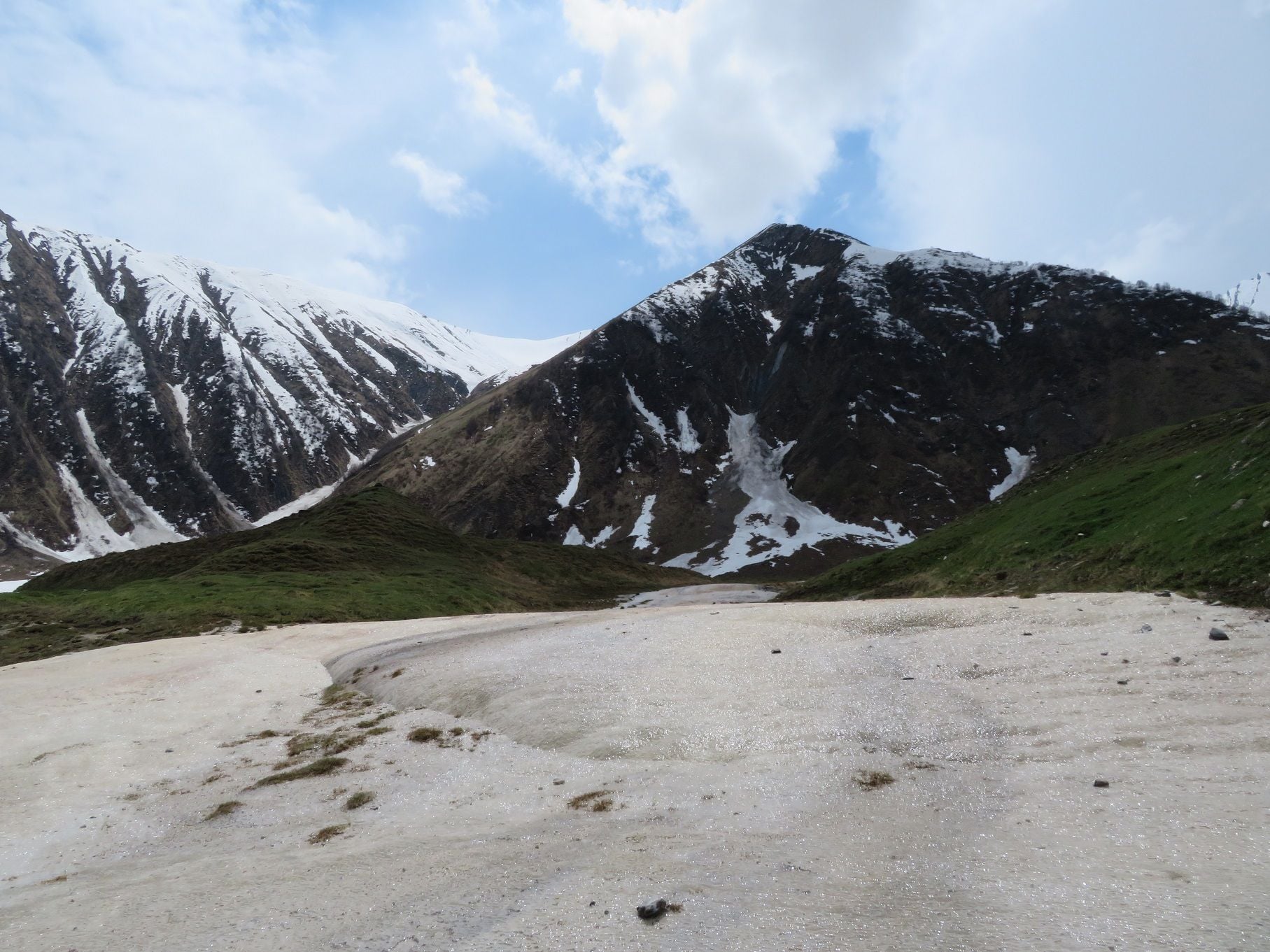


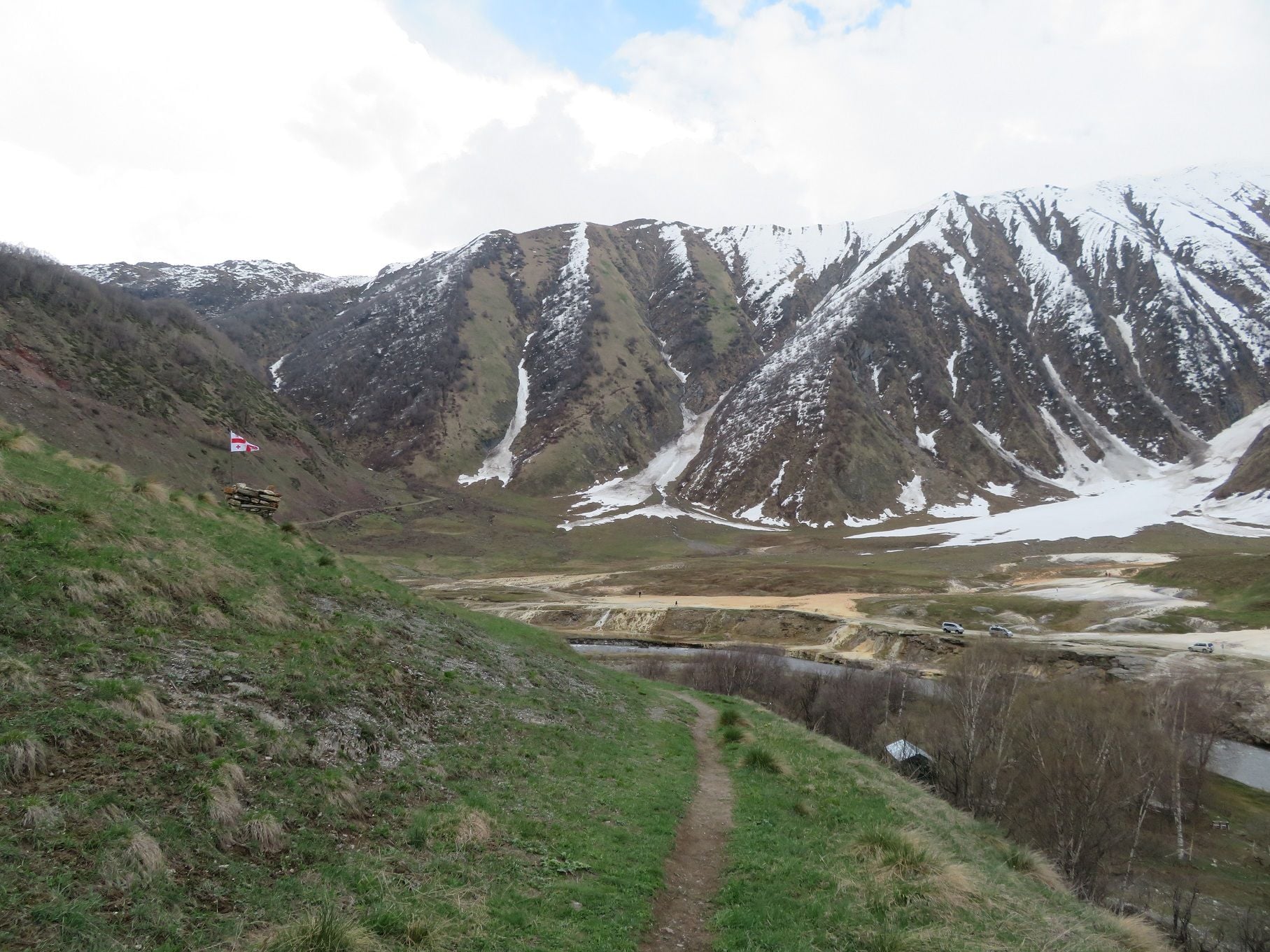

What a glorious day! Just returned from a couple of half-day hikes into the stunning Caucasus Mountains - in some sunshine. The weather held up most of the day so we decided to venture out again - to the Sno and Truso Valleys. Instead of boring you with too much prose, today's installment is a collection of my favorite pics from our excursions. If you have questions, I'd be happy to answer them.
Without further ado, please enjoy.







#30
Original Poster
Join Date: Sep 2012
Posts: 3,143
Likes: 0
Received 0 Likes
on
0 Posts
Yestravel: Thanks. I really like the photo capability too. Really gives the reports additional color.
From the Mountains to the Valley
We traded active hiking in the Caucasus for some R&R in Kakheti, Georgia’s most important wine producing region. Georgia is considered the birthplace of wine, with evidence of its production 8,000 years ago. Georgia’s method of wine production is unique. Grape is crushed and placed in large clay jars - seed, pulp, skins, and all - buried underground with only the rim of the jars exposed. The combined ingredients are left underground to ferment for about six months before being taken out. At this point the wine is drinkable. Most of it though is put into oak barrels for further fermentation and aging.It took approximately 2 hours to make our way out of the mountains and toward the direction of Tbilisi. Just south of Ananuri Fortress we headed east to Kakheti. Much of this 2.5 hour leg was on rough gravel roads, as most of the pavement was washed out by recent rain and snow and is awaiting reconstruction.We arrived at our hotel, the Radisson Collection Tsinandali Estate, in the early afternoon. We chose the Radisson as it is one of the best hotels in the region, even though it is a bit tucked away about 15 minutes from Telavi, Kakheti’s main town.We checked into our hotel, enjoyed a leisurely lunch at the hotel’s restaurant, and walked to nearby Prince Alexander Chavchavadze’s estate home and gardens. The home was a delight to wander around. It gave us a good sense of life for aristocrats in the region in the 1800s. The home also has a small wine cellar in the basement. There’s not much in the gardens, but a leisurely stroll among the trees was fine for us.
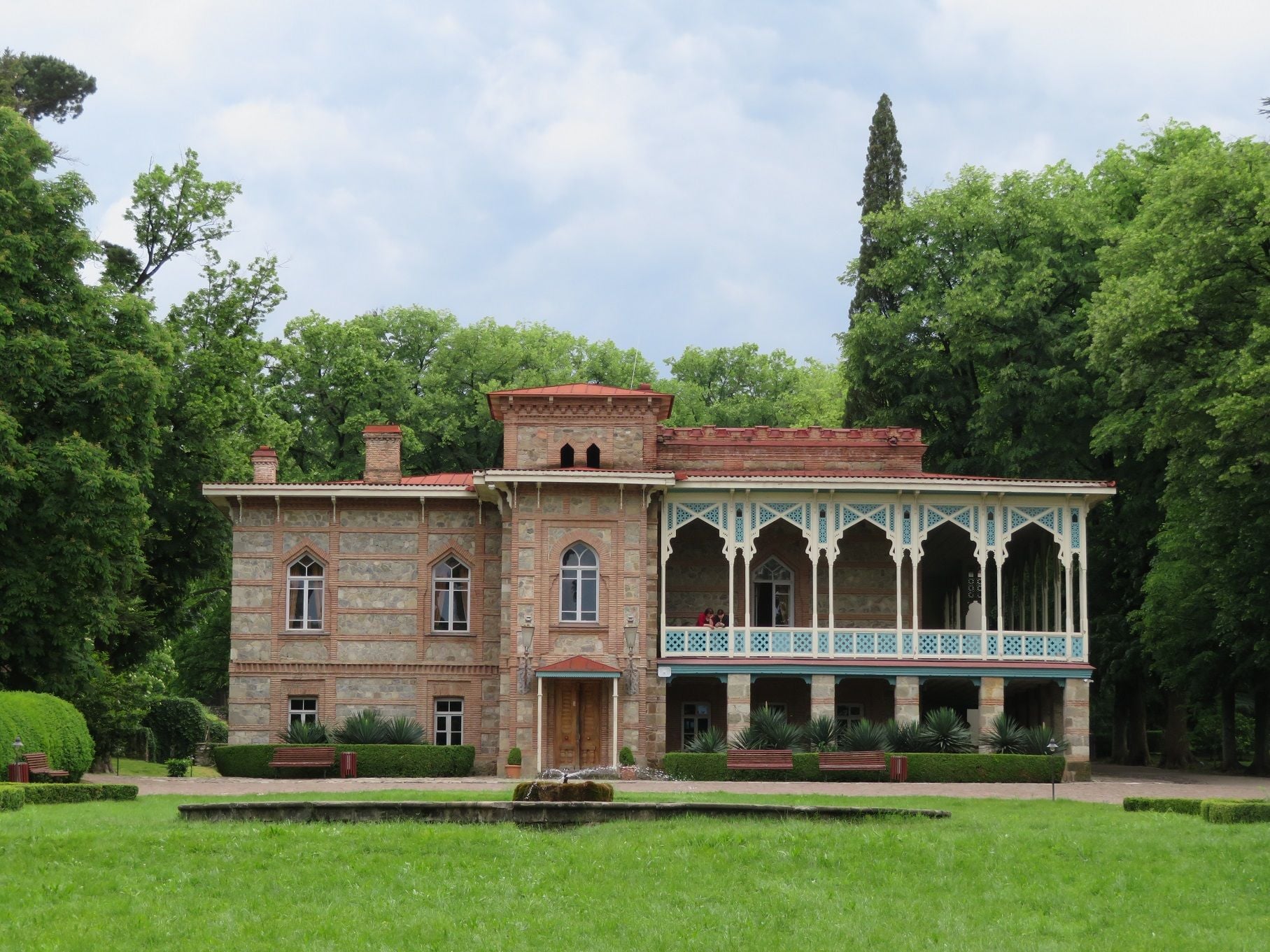
Prince Alexander Chavchavadze's Tsinandali home
Dinner was back at the hotel as there did not seem to be much in terms of options in the vicinity.On the next day and our only full day in the region we hired the services of a travel agency through the hotel. We visited King Erekle’s palace and museum in Telavi, two nearby monasteries, and went wine tasting at two different small family-owned cellar doors. The palace is very small and took all of 15 minutes to see; the museum took a bit longer but not by much. I most enjoyed Alaverdi Monastery, one of the most significant in the Kakheti region. Even though we’ve been visiting several monasteries over the past few days, we still enjoyed our time here and took our time to admire the building and all the artwork within it. We also visited Ikalto Monastery, a medieval academy of learning founded in the 6th century. The wine tastings were very simple and not much of an experience; I don’t know if it is due to the smallness of the two places we’ve visited or perhaps it’s just that the region’s wineries are not equipped for tourism yet.

Clay pots filled with wine with only the rims exposed
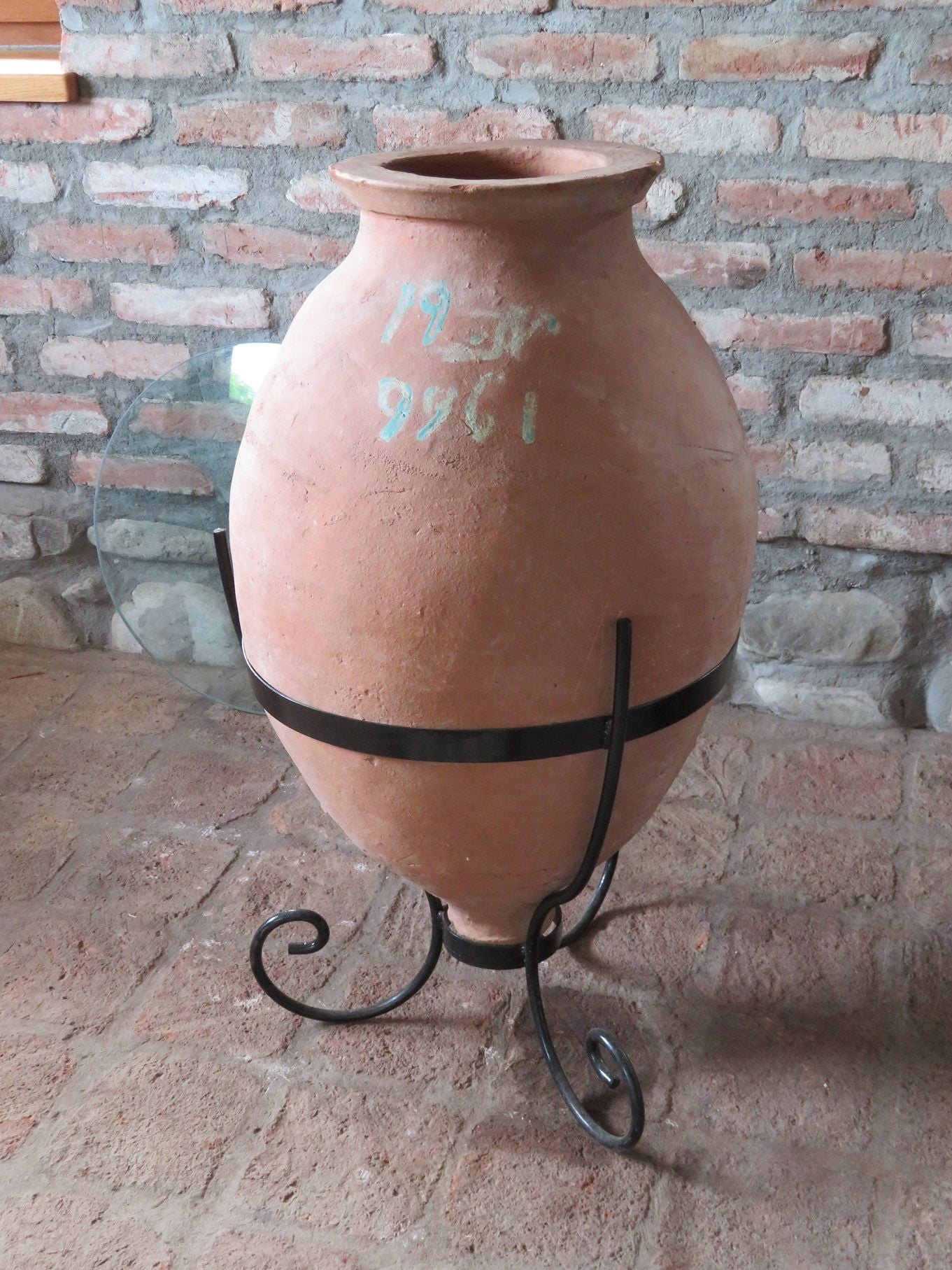
Clay pot

King Erekle II's palace

Alaverdi Monastery
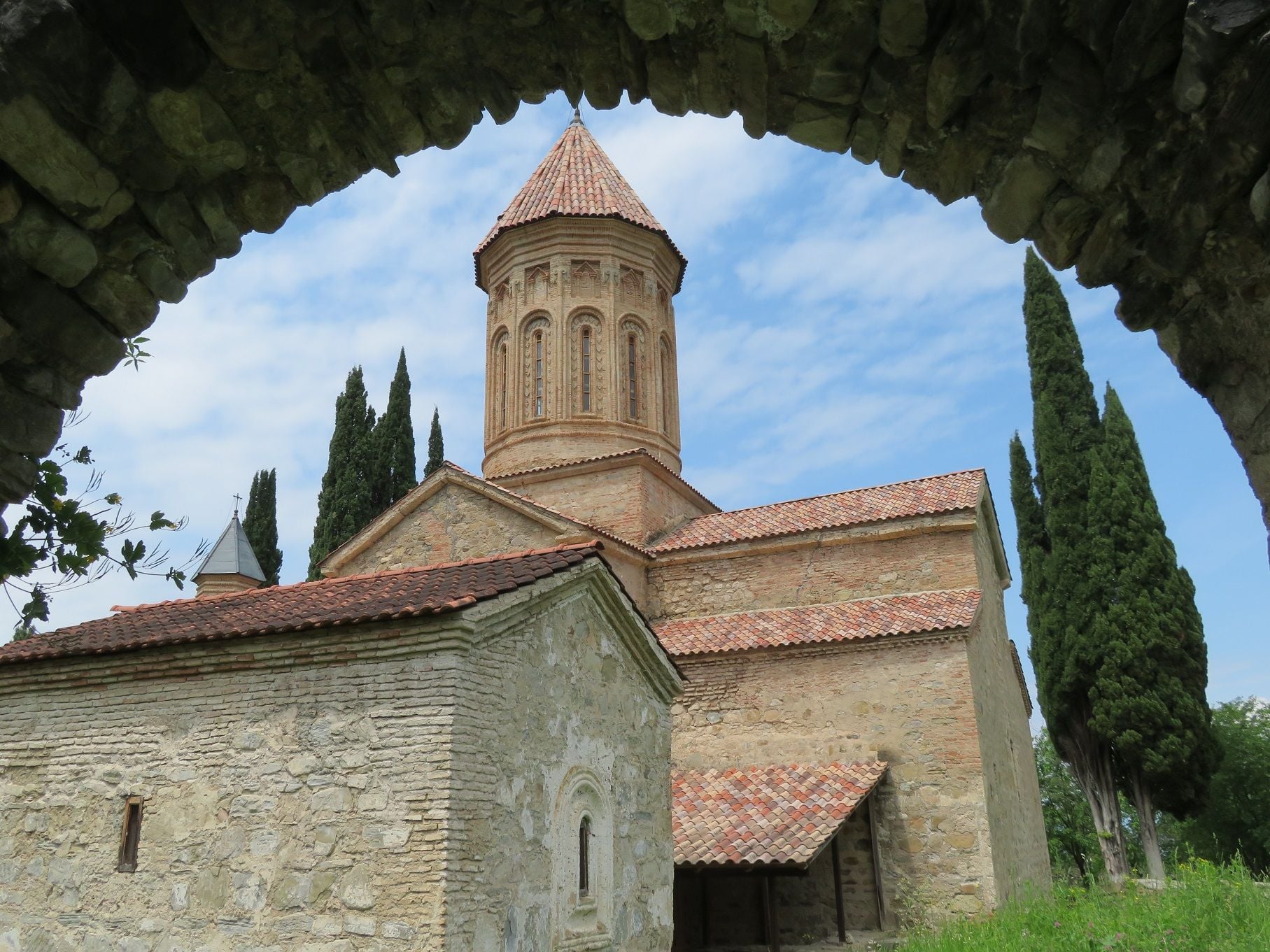
Ikalto Monastery
We’ve had two of our most leisurely days on our trip since. While we would have preferred a more active itinerary, we are not complaining about the downtime either.
Tomorrow we're off to Baku, Azerbaijan, the last leg of what has been a most amazing trip so far. See you in Baku.
From the Mountains to the Valley
We traded active hiking in the Caucasus for some R&R in Kakheti, Georgia’s most important wine producing region. Georgia is considered the birthplace of wine, with evidence of its production 8,000 years ago. Georgia’s method of wine production is unique. Grape is crushed and placed in large clay jars - seed, pulp, skins, and all - buried underground with only the rim of the jars exposed. The combined ingredients are left underground to ferment for about six months before being taken out. At this point the wine is drinkable. Most of it though is put into oak barrels for further fermentation and aging.It took approximately 2 hours to make our way out of the mountains and toward the direction of Tbilisi. Just south of Ananuri Fortress we headed east to Kakheti. Much of this 2.5 hour leg was on rough gravel roads, as most of the pavement was washed out by recent rain and snow and is awaiting reconstruction.We arrived at our hotel, the Radisson Collection Tsinandali Estate, in the early afternoon. We chose the Radisson as it is one of the best hotels in the region, even though it is a bit tucked away about 15 minutes from Telavi, Kakheti’s main town.We checked into our hotel, enjoyed a leisurely lunch at the hotel’s restaurant, and walked to nearby Prince Alexander Chavchavadze’s estate home and gardens. The home was a delight to wander around. It gave us a good sense of life for aristocrats in the region in the 1800s. The home also has a small wine cellar in the basement. There’s not much in the gardens, but a leisurely stroll among the trees was fine for us.

Prince Alexander Chavchavadze's Tsinandali home
Dinner was back at the hotel as there did not seem to be much in terms of options in the vicinity.On the next day and our only full day in the region we hired the services of a travel agency through the hotel. We visited King Erekle’s palace and museum in Telavi, two nearby monasteries, and went wine tasting at two different small family-owned cellar doors. The palace is very small and took all of 15 minutes to see; the museum took a bit longer but not by much. I most enjoyed Alaverdi Monastery, one of the most significant in the Kakheti region. Even though we’ve been visiting several monasteries over the past few days, we still enjoyed our time here and took our time to admire the building and all the artwork within it. We also visited Ikalto Monastery, a medieval academy of learning founded in the 6th century. The wine tastings were very simple and not much of an experience; I don’t know if it is due to the smallness of the two places we’ve visited or perhaps it’s just that the region’s wineries are not equipped for tourism yet.

Clay pots filled with wine with only the rims exposed

Clay pot

King Erekle II's palace

Alaverdi Monastery

Ikalto Monastery
We’ve had two of our most leisurely days on our trip since. While we would have preferred a more active itinerary, we are not complaining about the downtime either.
Tomorrow we're off to Baku, Azerbaijan, the last leg of what has been a most amazing trip so far. See you in Baku.
#31
Join Date: Mar 2014
Posts: 4,409
Likes: 0
Received 0 Likes
on
0 Posts
Just started reading your trip report. I don't frequent the Asia forum too often, so glad that you linked it in Yestravel's report. What a fascinating trip! Love your photos. And I'm very impressed with all the hiking you have done. You have definitely chosen some off the beaten path countries!
#32
Original Poster
Join Date: Sep 2012
Posts: 3,143
Likes: 0
Received 0 Likes
on
0 Posts
KarenWoo: Thank you for your interest and for commenting. Among the three countries, Georgia is the most discovered followed by Armenia, but even so, you are still able to enjoy most places in relative isolation. Azerbaijan seems to be the least touristed of the three.
To Azerbaijan
We received a notice via email that our flight from Tbilisi to Baku is delayed for two hours, so we slept in a little longer. We were picked up by Gamarjoba Georgia Tours for our two hour trip from our hotel in Tsinandali to Tbilisi Airport. Other than our delay, which we found out was due to a closure of airspace in Azerbaijan for military exercises, our flight on Buta Airways, a subsidiary of Azerbaijan Airlines, was uneventful.
We arrived to a very modern airport in Baku. Immigration was professional and fast. The one and only obligatory question seemed to be dependent on whether or not they see Armenian entry and exit stamps on your passport, in which case you are asked where in Armenia you’ve traveled. Any evidence of a visit to Nagorno-Karabakh may result in entry denial. In our case, we weren’t anywhere near it.
From the airport, it was about a 40-minute taxi ride to our hotel - the Fairmont Flame Towers. We did encounter a bit of traffic along the way. Upon check-in, we were pleasantly surprised to find out that we were upgraded to a Caspian Suite, complete with full views of the city skyline and the Caspian Sea. (I will write more completely about the hotels we’ve stayed at in a separate post.)
A Seaside Introduction
After freshening up, we went for a stroll along the seaside promenade fronting the Caspian Sea. Between our walk downhill from our hotel to the water and our cab ride in from the airport, we noticed how Parisian and Viennese the city looked, with its large classical-style buildings, wide streets, and expansive parks full of flowers and trees. Baku is definitely the greenest of the three capital cities we’ve visited on this trip.
We walked from the plaza where the giant Azerbaijani flag flies north along the Caspian until we reached the end of the park. The promenade is very wide, with pavement all along the way. Closer to the water are three levels of paths paved with large stones going to the sea. It was the perfect afternoon for a seaside stroll. We were joined by families, couples, and groups of people also out to enjoy the fine weather. Other than a handful of tourists here and there, most of the strollers seem to be locals. All along the way are inviting open-air cafes, kiosks selling snacks and drinks, etc. We treated ourselves to some ice cream on our walk - Turkish-style. The 2-mile experience felt akin to a passeggiata stroll popular in Italy and many parts of Europe.
On the way back towards the hotel we stopped at the Park Boulevard Mall next to the seaside promenade for a light dinner. The predominant choice of fate was Turkish fast food, so that’s what we went for. After dinner, we walked back to our hotel along the waterfront. By now it was nightfall. We enjoyed views of the lit-up city skyline all along the way, complete with light displays on the iconic Flame Towers itself.
Where Europe Meets Turkey and Iran
We woke up to yet another glorious day. Greeting us this morning was a picture-perfect Baku looking forward to the day ahead and the waters of the Caspian glistening to almost say “Look at me. Look at me.” We took advantage of the floor-to-ceiling windows of our suites to survey the landscape and take in a bird’s-eye view of the route we’re about to trace with our feet.
Our full-day walk today would be aided by a route suggested by Lonely Planet: https://www.lonelyplanet.com/azerbai...dff1b45/358673. The prescribed route takes us from the heart of Old Baku, into the new city, and along the waterfront, and incorporates several of the city’s highlights.
From our hotel we took a short taxi ride to the gates of Old Baku, from where we commenced our walk. The old quarter is home to a large stone tower built long ago, a large palace that was once home to the Persian shahs who ruled over Baku and large parts of Azerbaijan, and thousands of midrises that are still inhabited by locals.
Maiden’s Tower, the symbol of Baku prior to the construction of the Flame Towers, was our first stop of the day. Parts of the tower date back a couple of millennia ago although the edifice wasn’t fully completed until the 12th century. It’s original purpose is unclear. Some suspect it was a Zoroastrian temple while others believed it served a defensive purpose. In any case, the stone structure is massive. It contains seven stories, with exhibits telling a story of the city of Baku and a few different points in its history. On top is an observation deck that offers nice views of the city below.
From Maiden’s Tower we made our way to the Palace of the Shirvanshahs, the seat of power during the days of Persian rule. In between the two points, we wandered among the quarter’s back streets and alleyways, looking at the sandstone buildings, admiring the balconies, and enjoying the detailed Islamic ornamentation and motifs that adorn each building. This section of town reminded me very much of Dubai’s old quarter, near that city’s creek, although unlike Dubai, Old Baku is still very much living and breathing.
The palace itself makes for an enjoyable visit, even though there was not much that compelled us to linger. While the palace contained exhibits educating about the life and times of Baku’s rulers during the middle of the second millennium, none of the rooms were restored to give visitors a sense of what and how they actually functioned in its heyday. Also on the grounds of the place are mausoleums to the former shahs and their families as well as a mosque and a Roman-styled bathhouse.
After touring the palace, we exited the old quarter and explored some of the newer parts of the town. The area immediately adjacent to the fortress walls is complete with European-style buildings from the 19th century. On this section of our walk, we passed the home of the Philharmonic, City Hall, university buildings, and the Azeri National Academy of Sciences. All of the buildings looked as if it could be transported from Paris, Vienna, or Istanbul’s new quarter.
North of here lies Fountains Square, a charming gathering place of sorts for locals and visitors alike. The square contains a park with a few interesting pieces of art and numerous sidewalk cafes, and is surrounded by several pedestrian-only shopping thoroughfares selling local fashion wares as well as big global brands. I could easily have been walking along Vienna’s Graben or Istanbul’s Istiklal Caddesi. The parks though have me transported to what I imagine the gardens of Shiraz and Isfahan to look like, even though I haven’t been.
We walked to the National History Museum, only to find it closed for restoration. From here we followed Lonely Planet’s suggested route to the seaside promenade overlooking the Caspian Sea. The welcome stroll took us to the newly-inaugurated Carpet Museum, built as if to look like an unfurling masterpiece. The museum houses a vast collection of Azerbaijani and Iranian carpets and tells the story of its production as well as regional variations. We had spent about 90 minutes here and all enjoyed it very much.
From the Carpet Museum it was a short walk to the funicular station which took us to the top of the hill, where a memorial to slain Azeri service members from various military engagements now sit. Across the street from the memorial sits the country’s Parliament. Opposite Parliament is the Flame Towers, where we headed. Completed in 2013 as the symbol of the new, post-Soviet Baku, the complex consists of three glass-encased towers built to resemble the flames of fire important to the Zoroastrian faith. One of the towers is home to an office building, another to an apartment building, and the third and final the Fairmont Hotel and our home for three nights.
We returned to our hotel for some rest and relaxation before venturing out again. We would otherwise have been done for the day, except that we had plans to be outside of the city for our next and final two days. This meant we had one more place to see: the Zaha Hadid-designed Heydar Aliyev Center. Named after the first President of Azerbaijan, the center houses an exhibition hall, a conference center, and a museum among other things. It was too late for us to visit the museum, so we satisfied ourselves to enjoying the unique design and architecture of the building by walking its perimeter. The white surface, the curves in the structure, and the glass windows somewhat echoes another cultural icon - the Sydney Opera House. Like the Opera House, the Heydar Aliyev Center seems to be a popular evening gathering spot for locals looking to relax and enjoy themselves on and around its grounds. We reached the center by metro, to and from Nariman Narimanov station, about a 10 minute walk.
For dinner tonight, we wanted Azeri food and settled for Firuze, a restaurant near Fountains Square. The restaurant is decorated with carpets and Azeri paraphernalia and could have been a scene out of a Silk Road-era gathering place. In fact, both here and in the old quarter, we felt as if we were in a different place and a different era. Parts of Baku definitely looked and felt Eastern as opposed to Yerevan and most of Tbilisi save a small section of the old town. We were at Firuze to dine, so back to food. Like Georgian food, Azeri food is served family style. We ordered a variety of dishes, everything from grilled meats and fish to roasted vegetables, all served with rice. Our favorite was the sag, rice cooked in a clay pot with pomegranate seeds and placed on a metal dish over burning charcoal surrounded by meats and vegetables - absolutely delicious!
From Fountains Square it was a short taxi ride to our hotel.
To Azerbaijan
We received a notice via email that our flight from Tbilisi to Baku is delayed for two hours, so we slept in a little longer. We were picked up by Gamarjoba Georgia Tours for our two hour trip from our hotel in Tsinandali to Tbilisi Airport. Other than our delay, which we found out was due to a closure of airspace in Azerbaijan for military exercises, our flight on Buta Airways, a subsidiary of Azerbaijan Airlines, was uneventful.
We arrived to a very modern airport in Baku. Immigration was professional and fast. The one and only obligatory question seemed to be dependent on whether or not they see Armenian entry and exit stamps on your passport, in which case you are asked where in Armenia you’ve traveled. Any evidence of a visit to Nagorno-Karabakh may result in entry denial. In our case, we weren’t anywhere near it.
From the airport, it was about a 40-minute taxi ride to our hotel - the Fairmont Flame Towers. We did encounter a bit of traffic along the way. Upon check-in, we were pleasantly surprised to find out that we were upgraded to a Caspian Suite, complete with full views of the city skyline and the Caspian Sea. (I will write more completely about the hotels we’ve stayed at in a separate post.)
A Seaside Introduction
After freshening up, we went for a stroll along the seaside promenade fronting the Caspian Sea. Between our walk downhill from our hotel to the water and our cab ride in from the airport, we noticed how Parisian and Viennese the city looked, with its large classical-style buildings, wide streets, and expansive parks full of flowers and trees. Baku is definitely the greenest of the three capital cities we’ve visited on this trip.
We walked from the plaza where the giant Azerbaijani flag flies north along the Caspian until we reached the end of the park. The promenade is very wide, with pavement all along the way. Closer to the water are three levels of paths paved with large stones going to the sea. It was the perfect afternoon for a seaside stroll. We were joined by families, couples, and groups of people also out to enjoy the fine weather. Other than a handful of tourists here and there, most of the strollers seem to be locals. All along the way are inviting open-air cafes, kiosks selling snacks and drinks, etc. We treated ourselves to some ice cream on our walk - Turkish-style. The 2-mile experience felt akin to a passeggiata stroll popular in Italy and many parts of Europe.
On the way back towards the hotel we stopped at the Park Boulevard Mall next to the seaside promenade for a light dinner. The predominant choice of fate was Turkish fast food, so that’s what we went for. After dinner, we walked back to our hotel along the waterfront. By now it was nightfall. We enjoyed views of the lit-up city skyline all along the way, complete with light displays on the iconic Flame Towers itself.
Where Europe Meets Turkey and Iran
We woke up to yet another glorious day. Greeting us this morning was a picture-perfect Baku looking forward to the day ahead and the waters of the Caspian glistening to almost say “Look at me. Look at me.” We took advantage of the floor-to-ceiling windows of our suites to survey the landscape and take in a bird’s-eye view of the route we’re about to trace with our feet.
Our full-day walk today would be aided by a route suggested by Lonely Planet: https://www.lonelyplanet.com/azerbai...dff1b45/358673. The prescribed route takes us from the heart of Old Baku, into the new city, and along the waterfront, and incorporates several of the city’s highlights.
From our hotel we took a short taxi ride to the gates of Old Baku, from where we commenced our walk. The old quarter is home to a large stone tower built long ago, a large palace that was once home to the Persian shahs who ruled over Baku and large parts of Azerbaijan, and thousands of midrises that are still inhabited by locals.
Maiden’s Tower, the symbol of Baku prior to the construction of the Flame Towers, was our first stop of the day. Parts of the tower date back a couple of millennia ago although the edifice wasn’t fully completed until the 12th century. It’s original purpose is unclear. Some suspect it was a Zoroastrian temple while others believed it served a defensive purpose. In any case, the stone structure is massive. It contains seven stories, with exhibits telling a story of the city of Baku and a few different points in its history. On top is an observation deck that offers nice views of the city below.
From Maiden’s Tower we made our way to the Palace of the Shirvanshahs, the seat of power during the days of Persian rule. In between the two points, we wandered among the quarter’s back streets and alleyways, looking at the sandstone buildings, admiring the balconies, and enjoying the detailed Islamic ornamentation and motifs that adorn each building. This section of town reminded me very much of Dubai’s old quarter, near that city’s creek, although unlike Dubai, Old Baku is still very much living and breathing.
The palace itself makes for an enjoyable visit, even though there was not much that compelled us to linger. While the palace contained exhibits educating about the life and times of Baku’s rulers during the middle of the second millennium, none of the rooms were restored to give visitors a sense of what and how they actually functioned in its heyday. Also on the grounds of the place are mausoleums to the former shahs and their families as well as a mosque and a Roman-styled bathhouse.
After touring the palace, we exited the old quarter and explored some of the newer parts of the town. The area immediately adjacent to the fortress walls is complete with European-style buildings from the 19th century. On this section of our walk, we passed the home of the Philharmonic, City Hall, university buildings, and the Azeri National Academy of Sciences. All of the buildings looked as if it could be transported from Paris, Vienna, or Istanbul’s new quarter.
North of here lies Fountains Square, a charming gathering place of sorts for locals and visitors alike. The square contains a park with a few interesting pieces of art and numerous sidewalk cafes, and is surrounded by several pedestrian-only shopping thoroughfares selling local fashion wares as well as big global brands. I could easily have been walking along Vienna’s Graben or Istanbul’s Istiklal Caddesi. The parks though have me transported to what I imagine the gardens of Shiraz and Isfahan to look like, even though I haven’t been.
We walked to the National History Museum, only to find it closed for restoration. From here we followed Lonely Planet’s suggested route to the seaside promenade overlooking the Caspian Sea. The welcome stroll took us to the newly-inaugurated Carpet Museum, built as if to look like an unfurling masterpiece. The museum houses a vast collection of Azerbaijani and Iranian carpets and tells the story of its production as well as regional variations. We had spent about 90 minutes here and all enjoyed it very much.
From the Carpet Museum it was a short walk to the funicular station which took us to the top of the hill, where a memorial to slain Azeri service members from various military engagements now sit. Across the street from the memorial sits the country’s Parliament. Opposite Parliament is the Flame Towers, where we headed. Completed in 2013 as the symbol of the new, post-Soviet Baku, the complex consists of three glass-encased towers built to resemble the flames of fire important to the Zoroastrian faith. One of the towers is home to an office building, another to an apartment building, and the third and final the Fairmont Hotel and our home for three nights.
We returned to our hotel for some rest and relaxation before venturing out again. We would otherwise have been done for the day, except that we had plans to be outside of the city for our next and final two days. This meant we had one more place to see: the Zaha Hadid-designed Heydar Aliyev Center. Named after the first President of Azerbaijan, the center houses an exhibition hall, a conference center, and a museum among other things. It was too late for us to visit the museum, so we satisfied ourselves to enjoying the unique design and architecture of the building by walking its perimeter. The white surface, the curves in the structure, and the glass windows somewhat echoes another cultural icon - the Sydney Opera House. Like the Opera House, the Heydar Aliyev Center seems to be a popular evening gathering spot for locals looking to relax and enjoy themselves on and around its grounds. We reached the center by metro, to and from Nariman Narimanov station, about a 10 minute walk.
For dinner tonight, we wanted Azeri food and settled for Firuze, a restaurant near Fountains Square. The restaurant is decorated with carpets and Azeri paraphernalia and could have been a scene out of a Silk Road-era gathering place. In fact, both here and in the old quarter, we felt as if we were in a different place and a different era. Parts of Baku definitely looked and felt Eastern as opposed to Yerevan and most of Tbilisi save a small section of the old town. We were at Firuze to dine, so back to food. Like Georgian food, Azeri food is served family style. We ordered a variety of dishes, everything from grilled meats and fish to roasted vegetables, all served with rice. Our favorite was the sag, rice cooked in a clay pot with pomegranate seeds and placed on a metal dish over burning charcoal surrounded by meats and vegetables - absolutely delicious!
From Fountains Square it was a short taxi ride to our hotel.
#35
Original Poster
Join Date: Sep 2012
Posts: 3,143
Likes: 0
Received 0 Likes
on
0 Posts
Scenes from Baku

Fortifications Around Old Baku
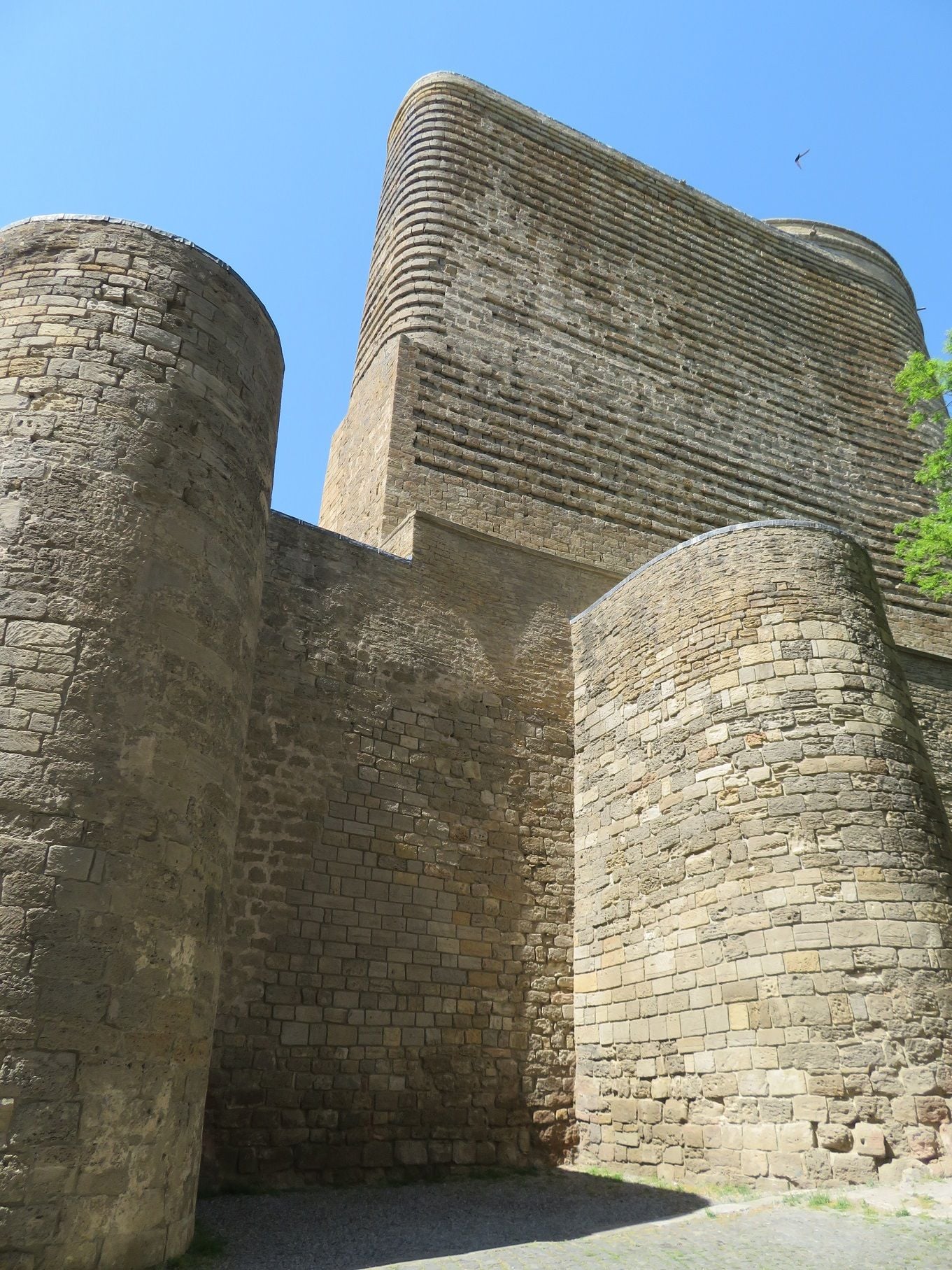
Maiden's Tower
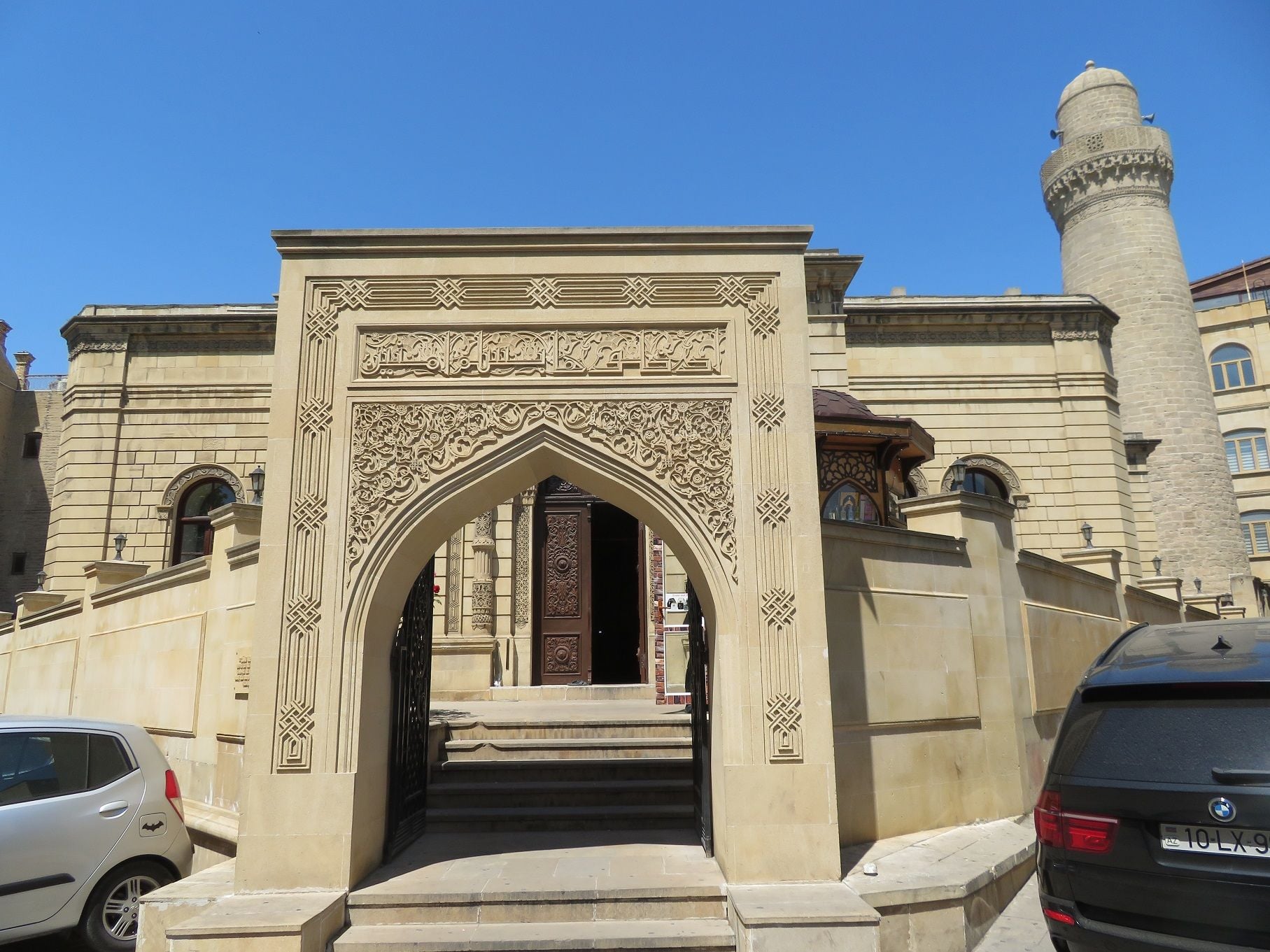
Mosque in Old Baku
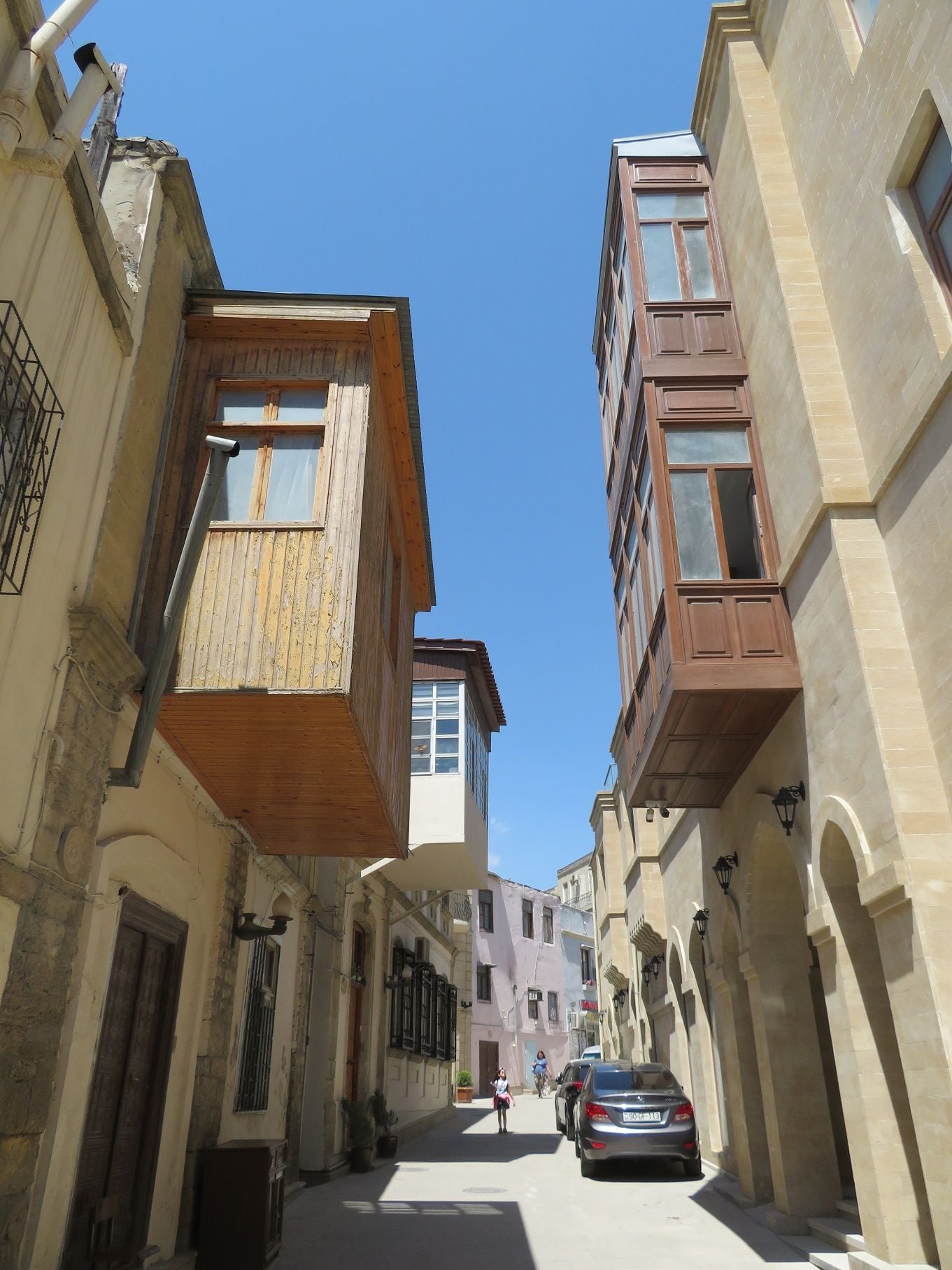
Alleyway in Old Baku

Typical European Style Building in Baku

Fortifications Around Old Baku

Maiden's Tower

Mosque in Old Baku

Alleyway in Old Baku

Typical European Style Building in Baku
Last edited by tripplanner001; May 25th, 2019 at 12:19 PM.
#39
Original Poster
Join Date: Sep 2012
Posts: 3,143
Likes: 0
Received 0 Likes
on
0 Posts
Sartoric: You're welcome. Glad you are enjoying the words and the photos.
Bay5s01: You're welcome.
Azerbaijan Beyond Baku
On today's agenda is a trip outside of Baku to experience what another part of Azerbaijan has to offer. Originally we had planned to travel overland from Telavi, Georgia, to Baku via Sheki. Such a route would have given us the opportunity to see more of Azerbaijan than just its capital city. We were, however, dissuaded from making the journey from our own research, as there wasn't clear information about the border crossing between Georgia and Azerbaijan and whether or not the formalities would be straightforward. After much thought, we opted to travel by air from Tbilisi to Baku, which meant us not being able to experience more of Azerbaijan en route. As such, we decided more or less at the last minute to take a day trip out of Baku. Among the available options, we settled on Shemakli and Lahij, It was one of the shorter day trips available and we were attracted to Lahij's focus on craftsmanship.
We arranged our day trip through Azterra. Viktoriya, with whom we corresponded, was very quick to respond to us and helped us plan our day. She was even eager to accommodate a last-minute change we made for tomorrow's tour, which we booked well in advance.
Met by our driver promptly at 8:30, we headed out of the city and Diri Baba Mausoleum, situated on the side of a mountain just outside of the town of Gobustan, not to be confused with the site of the rock petroglyphs of the same name. The mausoleum is built of stone in the shape of a Zoroastrian temple. Inside is a small chapel believed to be where a local rule died and was left there for hundreds of years before being removed. On top of the mausoleum are views of the valley below.
From here it was a 20 minute drive to the town of Shemakhi, home to the capital of the Persian Shira state before the capital was moved to Baku several hundred years ago. Our main stop here is the Juma (or Friday, in Arabic) Mosque. If a building was built to give glory to the Creator, this is it. Both the outside and the inside offered praise in stone, marble, and design. The chandeliers immediately grab the eye and the mihrab is splendid. It is one of the most beautiful mosques we've visited.
By now it waw around 11 and it was another hour before we reached our next stop, a suspension bridge high up connecting two sides of a gorge with a narrow rushing river below. We were about 20-30 minutes from our final stop of the day, Lahij. The landscape is pretty, and lush green. On the other side of the bridge is a trail that leads to a small village, purported to take about 40 minutes one way on foot. We didn't have the time, so we simply walked a little, enjoyed the views, and returned.
On the way out of Baku, we immediately noticed how dry and arid the landscape is. It is definitely drier than all of the places we've traveled through on this trip. The dry landscape gave way to rolling hills not to far from the mausoleum we visited this morning. Along the way we saw numerous sheep, goat, and cattle. Leaving Shemakhi, the hills got taller, and greener. By the time we reached the suspension bridge, we were looking at tall mountains that reached the sky. The drive from the bridge to Lahij is particularly picturesque, with rock formations of different shapes and sizes.
Lahij is a small village nestled in the mountains famous for its copper - making traditions. The village is small - centered on one main cobblestone street - but oozes with charm. We enjoyed looking at the homes, all built of stone, popping into shops, and watching some of the craftsmen at work. And yes we did make a couple of purchases.
After Lahij it was a straight journey back to Baku, which took about 3 hours. We celebrated our last night in Baku with dinner back at Firuse (the second night was as good as the first) and a wander among the streets around Fountains Square.
Bay5s01: You're welcome.
Azerbaijan Beyond Baku
On today's agenda is a trip outside of Baku to experience what another part of Azerbaijan has to offer. Originally we had planned to travel overland from Telavi, Georgia, to Baku via Sheki. Such a route would have given us the opportunity to see more of Azerbaijan than just its capital city. We were, however, dissuaded from making the journey from our own research, as there wasn't clear information about the border crossing between Georgia and Azerbaijan and whether or not the formalities would be straightforward. After much thought, we opted to travel by air from Tbilisi to Baku, which meant us not being able to experience more of Azerbaijan en route. As such, we decided more or less at the last minute to take a day trip out of Baku. Among the available options, we settled on Shemakli and Lahij, It was one of the shorter day trips available and we were attracted to Lahij's focus on craftsmanship.
We arranged our day trip through Azterra. Viktoriya, with whom we corresponded, was very quick to respond to us and helped us plan our day. She was even eager to accommodate a last-minute change we made for tomorrow's tour, which we booked well in advance.
Met by our driver promptly at 8:30, we headed out of the city and Diri Baba Mausoleum, situated on the side of a mountain just outside of the town of Gobustan, not to be confused with the site of the rock petroglyphs of the same name. The mausoleum is built of stone in the shape of a Zoroastrian temple. Inside is a small chapel believed to be where a local rule died and was left there for hundreds of years before being removed. On top of the mausoleum are views of the valley below.
From here it was a 20 minute drive to the town of Shemakhi, home to the capital of the Persian Shira state before the capital was moved to Baku several hundred years ago. Our main stop here is the Juma (or Friday, in Arabic) Mosque. If a building was built to give glory to the Creator, this is it. Both the outside and the inside offered praise in stone, marble, and design. The chandeliers immediately grab the eye and the mihrab is splendid. It is one of the most beautiful mosques we've visited.
By now it waw around 11 and it was another hour before we reached our next stop, a suspension bridge high up connecting two sides of a gorge with a narrow rushing river below. We were about 20-30 minutes from our final stop of the day, Lahij. The landscape is pretty, and lush green. On the other side of the bridge is a trail that leads to a small village, purported to take about 40 minutes one way on foot. We didn't have the time, so we simply walked a little, enjoyed the views, and returned.
On the way out of Baku, we immediately noticed how dry and arid the landscape is. It is definitely drier than all of the places we've traveled through on this trip. The dry landscape gave way to rolling hills not to far from the mausoleum we visited this morning. Along the way we saw numerous sheep, goat, and cattle. Leaving Shemakhi, the hills got taller, and greener. By the time we reached the suspension bridge, we were looking at tall mountains that reached the sky. The drive from the bridge to Lahij is particularly picturesque, with rock formations of different shapes and sizes.
Lahij is a small village nestled in the mountains famous for its copper - making traditions. The village is small - centered on one main cobblestone street - but oozes with charm. We enjoyed looking at the homes, all built of stone, popping into shops, and watching some of the craftsmen at work. And yes we did make a couple of purchases.
After Lahij it was a straight journey back to Baku, which took about 3 hours. We celebrated our last night in Baku with dinner back at Firuse (the second night was as good as the first) and a wander among the streets around Fountains Square.
#40
Original Poster
Join Date: Sep 2012
Posts: 3,143
Likes: 0
Received 0 Likes
on
0 Posts
One Final Day
We reluctantly left our beautiful home for three nights - the Flame Towers - this morning for our final day of touring in Azerbaijan. We made a last-minute request of Azterra to provide us with a larger vehicle so that we could transport all our luggage and to drop us off at the airport after the conclusion of the tour, which they obliged.
Our guide, Karim (who turned out to be the best we had the entire trip), and our driver met us at our hotel promptly at 9 and we were on our way out of the city once again. The morning had us heading south - to the mud volcanoes and the rock petroglyphs of Gobustan. Along the way, Karim provided excellent commentary on Azerbaijan and the Caucasus region.
Similar to the west of Baku, driving south of the city and hugging the coast of the Caspian Sea, we went through very arid landscapes. On the shoreline and out on the sea itself we passed through several oil rigs, refineries, and other processing facilities. Upon arrival in Gobustan, about 45 minutes after we departed Baku, we had to leave our vans and be transported the rest of the way via small taxis, about a 20 minute journey.
There are about 700 to 800 mud volcanoes in the world and about 300 to 400 found in Gobustan. The volcanoes are formed by methane gas that is pumped up from the center of the earth. On the surface, we mostly saw bubbling although eruptions do occur from time to time. The mud that comes out of the volcanoes are cool to the touch, and is supposedly good for the human skin. After wandering amongst the volcanoes for a few minutes, it was back into the small cars to meet our van.
From there we visited the museum and petroglyph site. The museum provides visitors with a good overview of the history and evolution of the site. The rock site itself is easy to visit, with a paved stone path that goes alongside the rocks and caves. We enjoyed the different images at the site; my favorites are the ones of people dancing and of the sailing vessels used by the inhabitants at the time. The site itself reminded me of the stone quarry on Easter Island in terms of its landscape and atmosphere. We did see a couple of big tour buses here as well as several large school groups - the most visitors we saw in one place during our time in Azerbaijan.
From Gobustan - now noon - it is back on the route heading north, towards Baku. Our guide pointed out some of the key sites we’ve visited over the past few days, and provided us with some enriching color that we couldn’t have read about in guidebooks, brochures, and exhibits.
Driving out of Baku, to its east, is the Abseron Peninsula, which juts out to the Caspian Sea. The Abseron Peninsula is closely linked to Azerbaijan’s oil and gas industry. Even the name Azerbaijan means “land of fire” in the local language. We visited three places on the peninsula. The first is Yanardag or burning mountain, named for the constant burning on the side of the hill. The Abseron Peninsula is rich in gas, and this is an area in which the gas reaches the surface of the earth naturally, causing the burning.
Gala is our second stop on the peninsula. We came to visit the open-air museum that showcases life in the area from prehistoric times to the 19th century. There are exhibits on traditional crafts such as carpet-making and pottery to petroglyphs found nearby. We enjoyed lunch at a small courtyard cafe around the corner before continuing onwards to Ateshgah Temple.
Located not too far from Baku International Airport, Ateshgah, or “place of fire” in Farsi, is a fire temple built in the 16th and 17th centuries. The temple was primarily used by Hindu fire worshippers who lived, visited, and traded here as Azerbaijan was a stop on the Silk Road. The temple was used by Sikhs and Zoroastrians as well. The complex is large with a series of rooms surrounding the main fire altar. There are designated places for sacrifice and funerary rituals. Several of the rooms served various functions: residences for clergy, cooking facilities, storage, etc. A natural flame used to feature at the central altar, although the flame went out in the late 19th century as drilling depleted the gas found underneath the altar. Today the temple is a museum and the fire is lit artificially.
And with that, it was time to bid farewell to two great guys - our guide and our driver - and to Azerbaijan. I am sharing this installment from the airport in Baku as we await my flight on Qatar Airways to Doha and onwards to NYC and DC. Thank you for joining me on this most incredible trip. I will share photos from our final two days in Azerbaijan as well as offer additional thoughts on our accommodations and final impressions of the South Caucasus in the coming days.
We reluctantly left our beautiful home for three nights - the Flame Towers - this morning for our final day of touring in Azerbaijan. We made a last-minute request of Azterra to provide us with a larger vehicle so that we could transport all our luggage and to drop us off at the airport after the conclusion of the tour, which they obliged.
Our guide, Karim (who turned out to be the best we had the entire trip), and our driver met us at our hotel promptly at 9 and we were on our way out of the city once again. The morning had us heading south - to the mud volcanoes and the rock petroglyphs of Gobustan. Along the way, Karim provided excellent commentary on Azerbaijan and the Caucasus region.
Similar to the west of Baku, driving south of the city and hugging the coast of the Caspian Sea, we went through very arid landscapes. On the shoreline and out on the sea itself we passed through several oil rigs, refineries, and other processing facilities. Upon arrival in Gobustan, about 45 minutes after we departed Baku, we had to leave our vans and be transported the rest of the way via small taxis, about a 20 minute journey.
There are about 700 to 800 mud volcanoes in the world and about 300 to 400 found in Gobustan. The volcanoes are formed by methane gas that is pumped up from the center of the earth. On the surface, we mostly saw bubbling although eruptions do occur from time to time. The mud that comes out of the volcanoes are cool to the touch, and is supposedly good for the human skin. After wandering amongst the volcanoes for a few minutes, it was back into the small cars to meet our van.
From there we visited the museum and petroglyph site. The museum provides visitors with a good overview of the history and evolution of the site. The rock site itself is easy to visit, with a paved stone path that goes alongside the rocks and caves. We enjoyed the different images at the site; my favorites are the ones of people dancing and of the sailing vessels used by the inhabitants at the time. The site itself reminded me of the stone quarry on Easter Island in terms of its landscape and atmosphere. We did see a couple of big tour buses here as well as several large school groups - the most visitors we saw in one place during our time in Azerbaijan.
From Gobustan - now noon - it is back on the route heading north, towards Baku. Our guide pointed out some of the key sites we’ve visited over the past few days, and provided us with some enriching color that we couldn’t have read about in guidebooks, brochures, and exhibits.
Driving out of Baku, to its east, is the Abseron Peninsula, which juts out to the Caspian Sea. The Abseron Peninsula is closely linked to Azerbaijan’s oil and gas industry. Even the name Azerbaijan means “land of fire” in the local language. We visited three places on the peninsula. The first is Yanardag or burning mountain, named for the constant burning on the side of the hill. The Abseron Peninsula is rich in gas, and this is an area in which the gas reaches the surface of the earth naturally, causing the burning.
Gala is our second stop on the peninsula. We came to visit the open-air museum that showcases life in the area from prehistoric times to the 19th century. There are exhibits on traditional crafts such as carpet-making and pottery to petroglyphs found nearby. We enjoyed lunch at a small courtyard cafe around the corner before continuing onwards to Ateshgah Temple.
Located not too far from Baku International Airport, Ateshgah, or “place of fire” in Farsi, is a fire temple built in the 16th and 17th centuries. The temple was primarily used by Hindu fire worshippers who lived, visited, and traded here as Azerbaijan was a stop on the Silk Road. The temple was used by Sikhs and Zoroastrians as well. The complex is large with a series of rooms surrounding the main fire altar. There are designated places for sacrifice and funerary rituals. Several of the rooms served various functions: residences for clergy, cooking facilities, storage, etc. A natural flame used to feature at the central altar, although the flame went out in the late 19th century as drilling depleted the gas found underneath the altar. Today the temple is a museum and the fire is lit artificially.
And with that, it was time to bid farewell to two great guys - our guide and our driver - and to Azerbaijan. I am sharing this installment from the airport in Baku as we await my flight on Qatar Airways to Doha and onwards to NYC and DC. Thank you for joining me on this most incredible trip. I will share photos from our final two days in Azerbaijan as well as offer additional thoughts on our accommodations and final impressions of the South Caucasus in the coming days.




